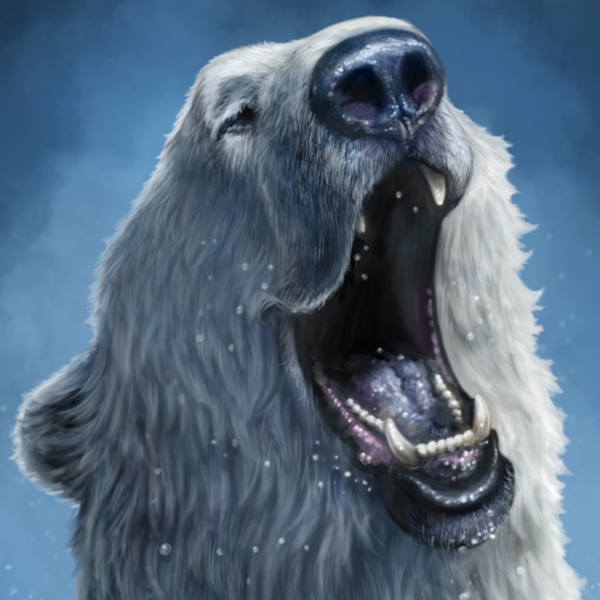
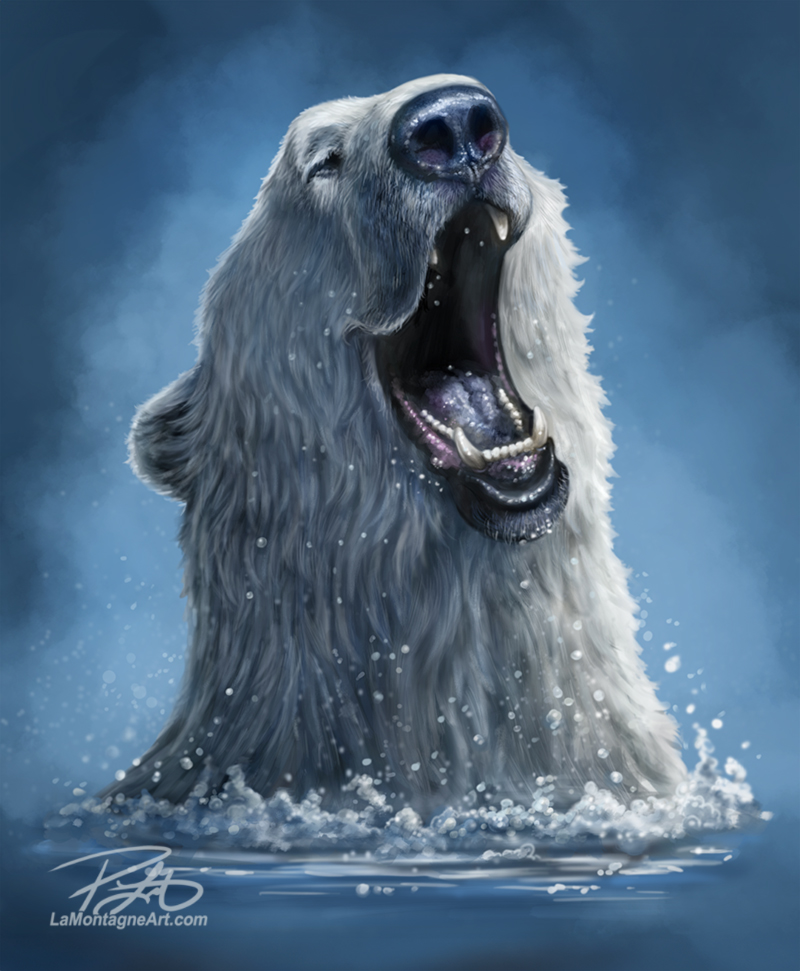
In June of last year, I painted my Big Bear on Blue polar bear painting, which is now a popular print. Pacific Music & Art used it as the cover of their 2025 calendar featuring my artwork. I like that painting and didn’t feel the need to create another polar bear image, at least not right away.
In July of last year, however, I shared the following sketch painting, the term I use for unfinished experiments. Because I had just painted a polar bear, I didn’t see the need to take it any further.
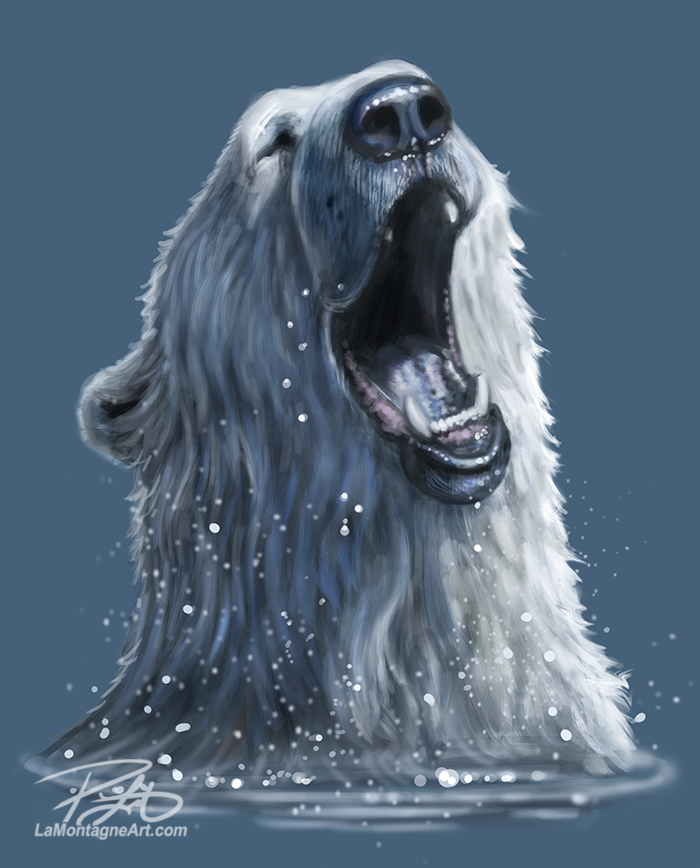 But it had received a positive response, and a few people sent me emails asking if I would finish it. So, over the last week, I put the time in to complete it, and I think Polar Plunge will be a nice addition to my print releases for spring.
But it had received a positive response, and a few people sent me emails asking if I would finish it. So, over the last week, I put the time in to complete it, and I think Polar Plunge will be a nice addition to my print releases for spring.
At the beginning of this year, I spent a few days looking through unfinished paintings. There are a couple I had forgotten about that I’d now like to dust off and complete, and I’d like to finish as many paintings in progress as I can before I start anything new.
I also created a 2025 list of folders with reference files, so I don’t have to wonder what’s coming next.
There’s always a short-lived high whenever I finish a painting. Years ago, it used to last for a week. Now, it lasts for about an hour, followed by a bit of a crash, for anywhere from a couple of days to a week. If I look through my reference files during that post-painting hangover, hoping to find the next idea, nothing inspires me.
This year, I decided to eliminate that problem. Art for a living is a job, and when one painting is finished, I need to start another, regardless of whether I feel like it. Thankfully, I now have 28 new folders containing reference images for paintings I can start right away. Some are paintings I need to finish, like the group of ring-tailed lemurs I’ve been working on. As I complete a painting, I’ll choose another folder and start the next one. And even if I’m not ‘feeling it,’ that will pass soon enough as I get into the new piece, because lost in the details of a painting is about as happy as I get.
I have never painted that many images in a year, but that’s not the goal. I simply now have 28 options and no excuses not to start a new piece.
When I’m not feeling especially creative, it helps to think of each painting as a commission. When clients pay me to paint their pets, I have a deadline or know that I’m wasting their time and money if I don’t work on their painting. Guilt is a strong motivator.
I’m trying to shift my perspective regarding my own paintings where I’m the client, and by not working, I’m wasting my own time and potential revenue.
I’m also working to create a new portfolio this year to attract new licensing clients. Even though many of my licenses aren’t exclusive, some companies are still reluctant to use an image on similar products if another company uses it, even if the market conflict is minimal. Anything can happen, and relying on only a few clients risks future income security. The loss of newspaper clients in recent years illustrates that point well.
While editorial cartooning is still a large part of my business, newspapers have experienced a steady decline for years, so it no longer provides a full-time income on its own. If I hadn’t had the whimsical wildlife side of my business, which is now the most significant portion of my income, I would have had to get a part-time job a few years ago.
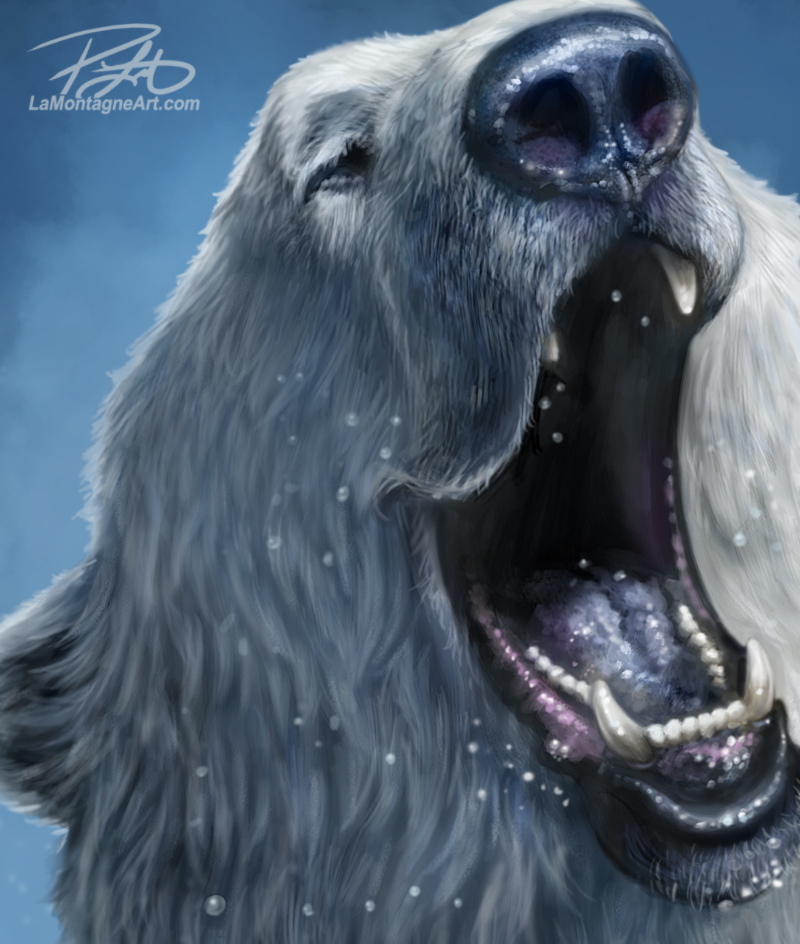 Last week, I delivered the year’s first print and sticker order to the Calgary Zoo. It was warm, with plenty of sunshine, and there weren’t many people. Even traffic was light, so I had an enjoyable day. When I got there, I chatted with the retail manager and the staff I know, then wandered through Canadian Wilds, my favourite part of the zoo.
Last week, I delivered the year’s first print and sticker order to the Calgary Zoo. It was warm, with plenty of sunshine, and there weren’t many people. Even traffic was light, so I had an enjoyable day. When I got there, I chatted with the retail manager and the staff I know, then wandered through Canadian Wilds, my favourite part of the zoo.
I texted my friend Kayla, one of the zookeepers, asking if she was working and where she was. She said she was in the North American porcupine enclosure, so I went there. Kayla was one of those who asked me if I was ever going to complete this new polar bear painting, so I was happy to tell her the finished painting was imminent.
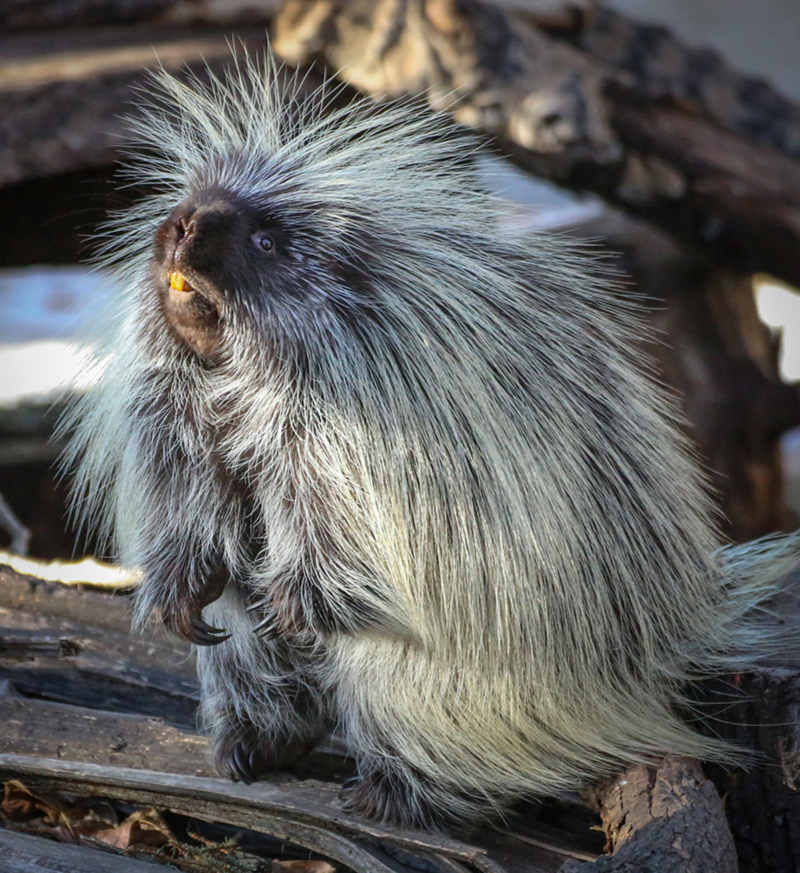 Porcupines are nocturnal, so they’re not active during the day, but like any animal, they’ll make an effort when food is involved. Because Kayla was inside the enclosure, feeding the cute and prickly resident, we had a nice chat while I got some decent reference shots. Add those to the ones I’ve taken at Discovery Wildlife Park, and there is now a Porcupine folder in my list of paintings I’d like to get to this year.
Porcupines are nocturnal, so they’re not active during the day, but like any animal, they’ll make an effort when food is involved. Because Kayla was inside the enclosure, feeding the cute and prickly resident, we had a nice chat while I got some decent reference shots. Add those to the ones I’ve taken at Discovery Wildlife Park, and there is now a Porcupine folder in my list of paintings I’d like to get to this year.
Though I took many more photos of different animals that day, most weren’t worth keeping. Bright sunny days and photography don’t usually mix. No matter how you compensate with camera settings, the lights end up too bright, the shadows too dark, and you can only fix so much in Photoshop. The sun is also low in the sky this time of year, which doesn’t help.
Normally, I’d be disappointed, but there have been plenty of days I’ve come home with dozens of shots worth keeping, and it often takes me years to get to them. And as I’ve explained, I have no shortage of paintings to get to this year. Hey, I delivered an order to one of my best customers, got out of the office, and had a nice day outside in the middle of winter. I have no complaints.
While I’ve recorded the occasional high-speed video for YouTube, it’s been quite a while, and I want to get back to using that platform to help promote my work. I’ve been spending a lot of time lately learning to use new recording software and hardware. Something many artists don’t realize when they want to turn their hobby into their work is that the business and promotion side of self-employment requires constant adaptation and continuing education. While it takes time away from creating art, it’s necessary for career longevity. Just because something worked well ten years ago, doesn’t mean it will today.
While I’m learning the ropes of these new tools and preparing to create more videos, I’ve got a few more paintings in progress to complete, and as I do, I look forward to sharing them with you.



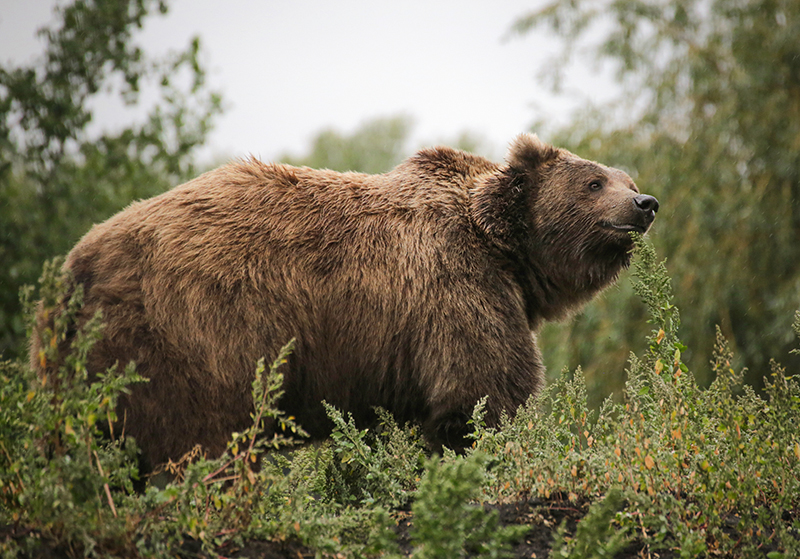 While I had lunch with my zookeeper friend, Serena, a couple of other people arrived. Coincidentally, they were also longtime friends of the park. Rather than the usual bear education presentation we’d seen several times, Serena gave the three of us a behind-the-scenes personal tour and visit with the bears.
While I had lunch with my zookeeper friend, Serena, a couple of other people arrived. Coincidentally, they were also longtime friends of the park. Rather than the usual bear education presentation we’d seen several times, Serena gave the three of us a behind-the-scenes personal tour and visit with the bears.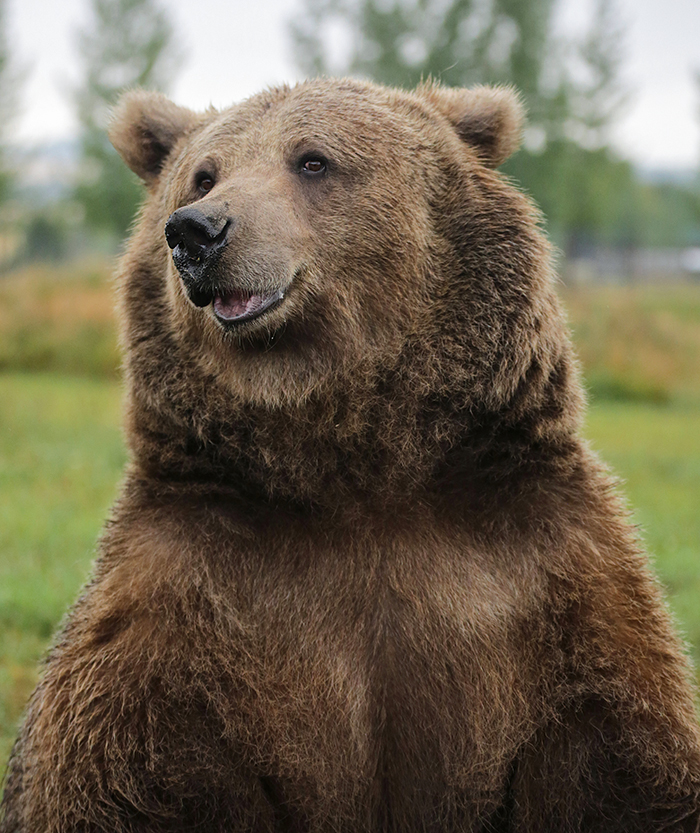 Cold, dark, and windy, the rain at least let up for a few hours. While the pictures I got weren’t impressive photographs on their own, some of these shots will be amazing for reference. I’ve written before about how sunny days aren’t great because they can wash out detail in the highlights and shadows, but an overcast day provided some very exciting photos of bear fur and features.
Cold, dark, and windy, the rain at least let up for a few hours. While the pictures I got weren’t impressive photographs on their own, some of these shots will be amazing for reference. I’ve written before about how sunny days aren’t great because they can wash out detail in the highlights and shadows, but an overcast day provided some very exciting photos of bear fur and features.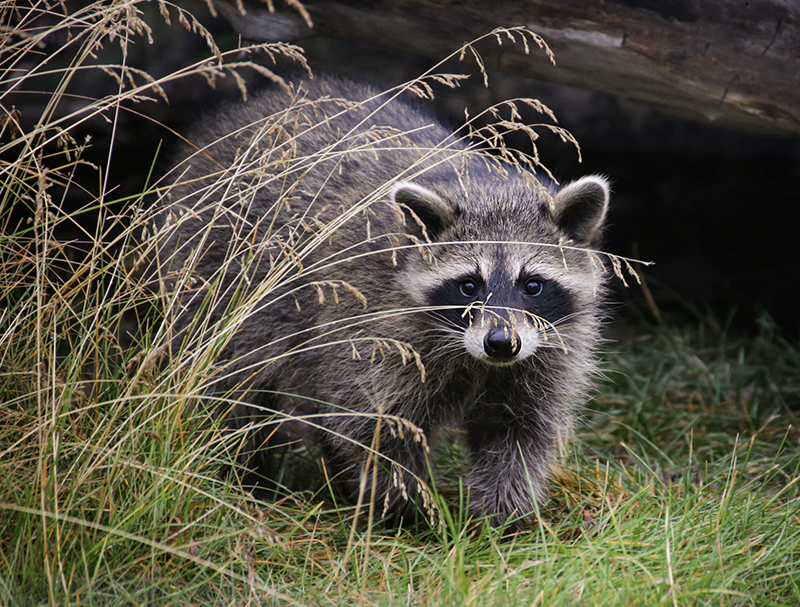 If that weren’t enough, Serena has been hand-raising an orphaned raccoon since he was tiny. Shonna I got to see him earlier this summer, but on this day, he was getting his first look at a much bigger world, as he was let loose for a bit to run and play in a large enclosure. If you’ve ever seen a cat or dog with the zoomies, imagine that with a raccoon. He was having a very good time.
If that weren’t enough, Serena has been hand-raising an orphaned raccoon since he was tiny. Shonna I got to see him earlier this summer, but on this day, he was getting his first look at a much bigger world, as he was let loose for a bit to run and play in a large enclosure. If you’ve ever seen a cat or dog with the zoomies, imagine that with a raccoon. He was having a very good time.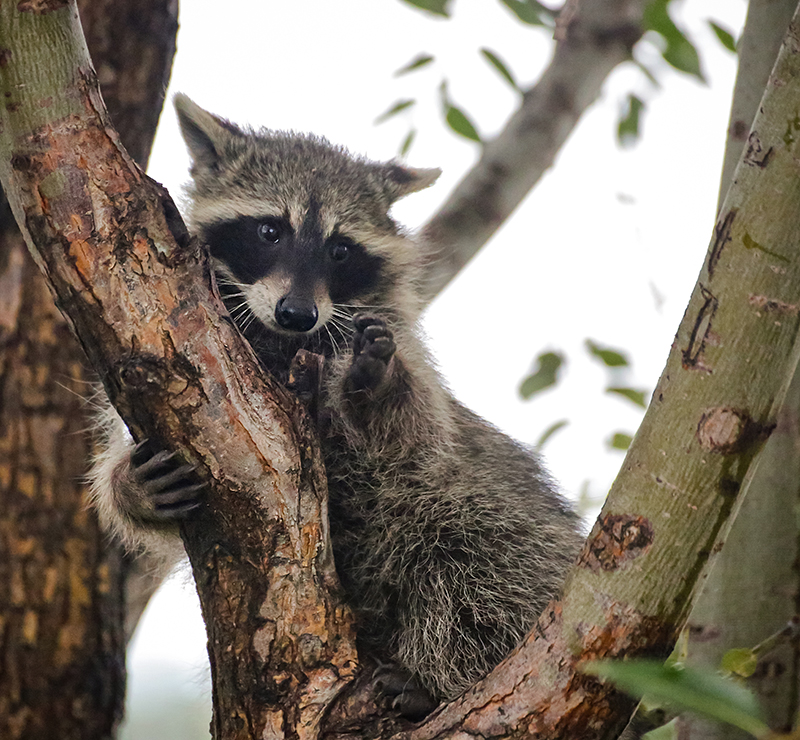 After the park, I took my parents out to dinner in Red Deer and spent the night at their place for a nice, albeit short, visit.
After the park, I took my parents out to dinner in Red Deer and spent the night at their place for a nice, albeit short, visit.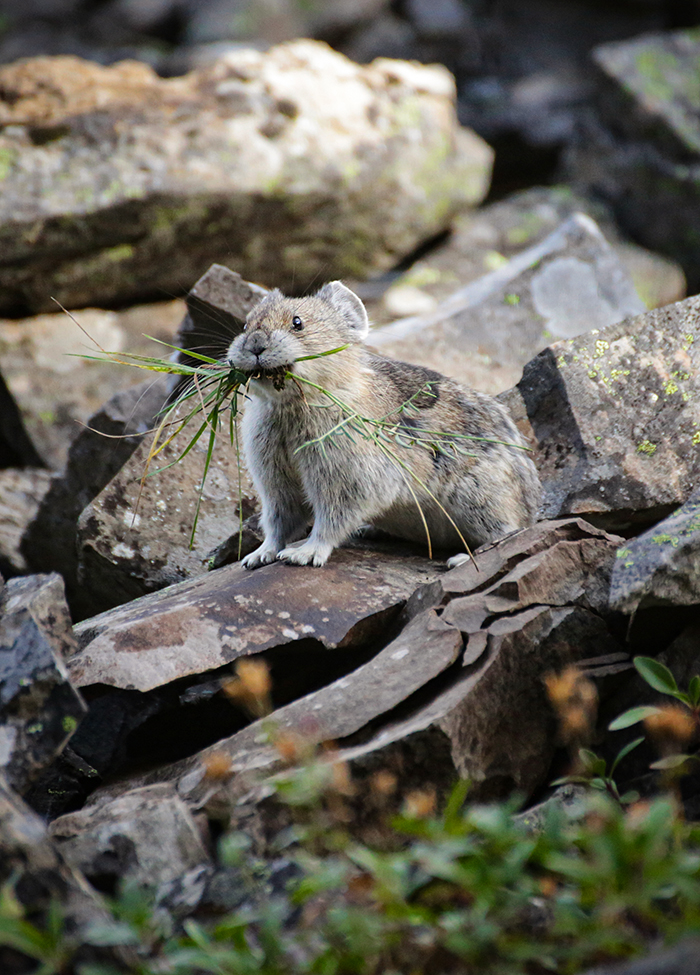 Several years ago, a local photographer told me about
Several years ago, a local photographer told me about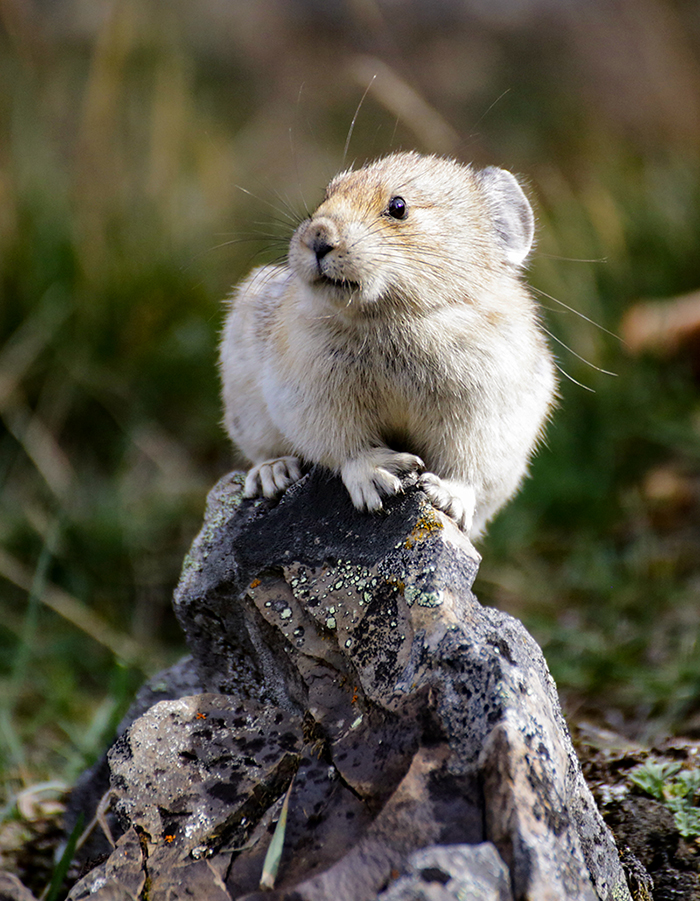 Their primary motivation is food, so they’re usually en route to one of the small patches of grass and vegetation among the rocks, where they’ll stuff their faces before running back to their stash. It’s fun to watch.
Their primary motivation is food, so they’re usually en route to one of the small patches of grass and vegetation among the rocks, where they’ll stuff their faces before running back to their stash. It’s fun to watch.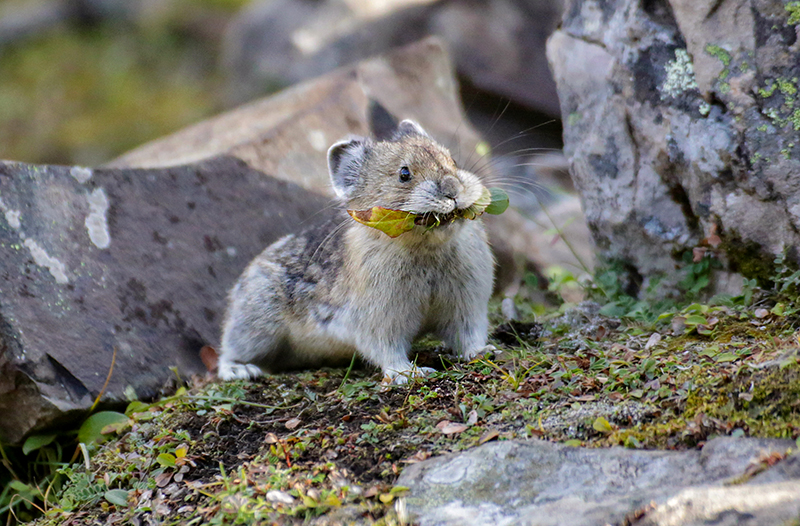 It can get cold up there at 2200m (7200 ft), and I always pack extra layers, but it was a pleasant fall morning, and I only needed a light jacket. On a few visits, there’ve been ten or 12 other people, often photographers with much bigger lenses than my 70-300mm, doing the same thing. But on this visit, I spent an hour and a half crawling over the rocks and snapping pics with the whole place to myself. Nobody else stopped.
It can get cold up there at 2200m (7200 ft), and I always pack extra layers, but it was a pleasant fall morning, and I only needed a light jacket. On a few visits, there’ve been ten or 12 other people, often photographers with much bigger lenses than my 70-300mm, doing the same thing. But on this visit, I spent an hour and a half crawling over the rocks and snapping pics with the whole place to myself. Nobody else stopped.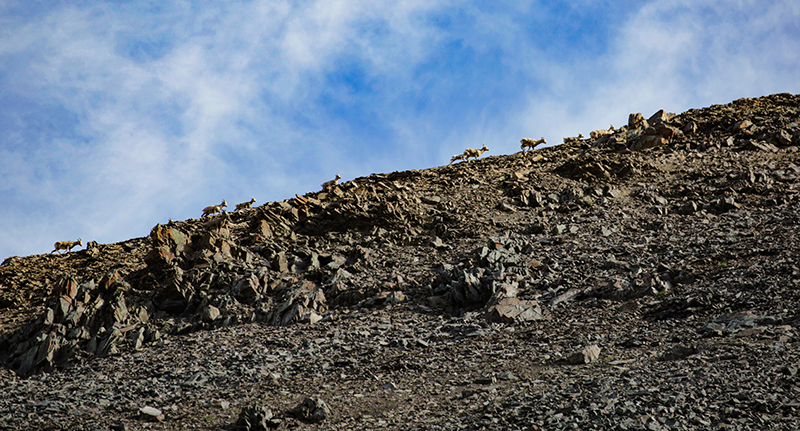 On each drive up to Rock Glacier, I usually see black bears or grizzlies, but none this time. They’re likely still low in the valleys, eating as much as possible before winter. But they can show up anywhere around here, and on these excursions, I’ve always got bear spray on my hip. Aside from the above pic of a line of bighorn sheep walking the top of the ridge, I only saw the wildlife I came for.
On each drive up to Rock Glacier, I usually see black bears or grizzlies, but none this time. They’re likely still low in the valleys, eating as much as possible before winter. But they can show up anywhere around here, and on these excursions, I’ve always got bear spray on my hip. Aside from the above pic of a line of bighorn sheep walking the top of the ridge, I only saw the wildlife I came for.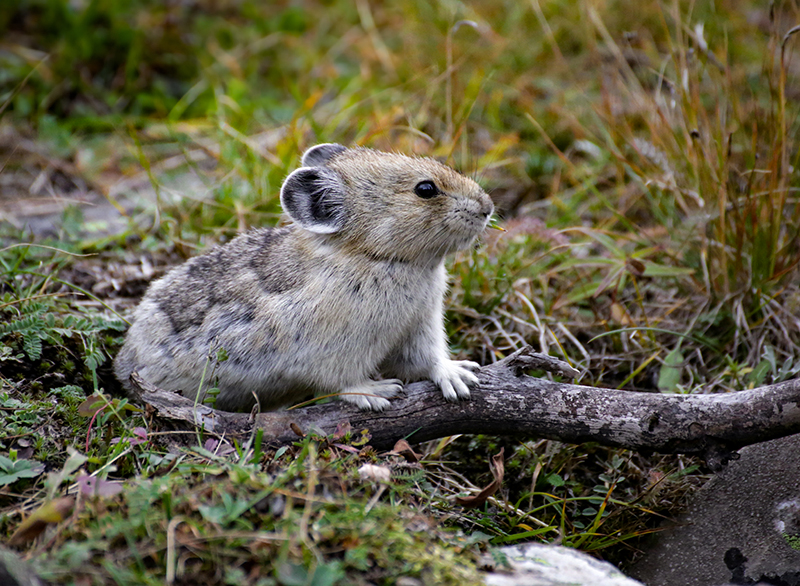 Though I have kept dozens of pika photos over the years, I’ve always felt I hadn’t quite got the one I wanted, that perfect photo to paint from. I finally got one on this trip, but I haven’t shared it in this post. It’ll just have to be a surprise.
Though I have kept dozens of pika photos over the years, I’ve always felt I hadn’t quite got the one I wanted, that perfect photo to paint from. I finally got one on this trip, but I haven’t shared it in this post. It’ll just have to be a surprise.

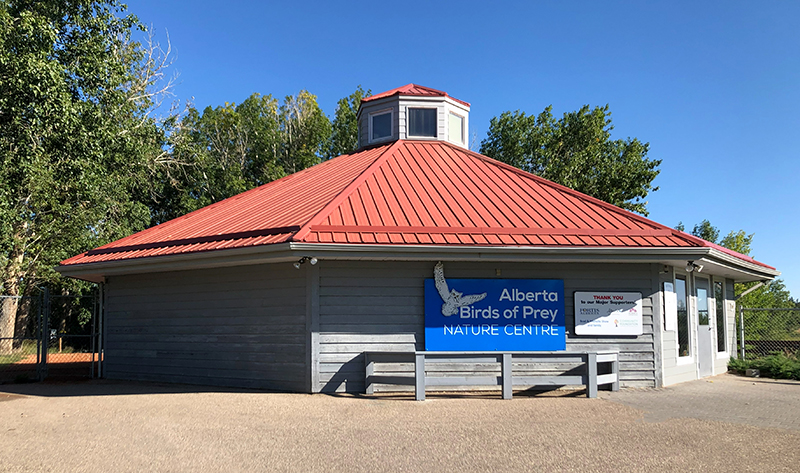
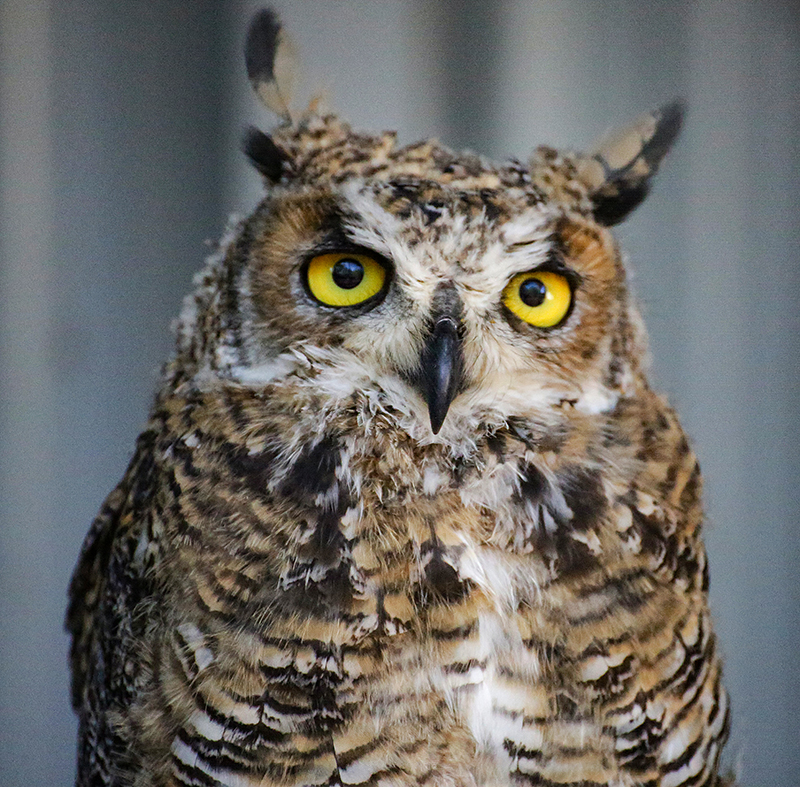
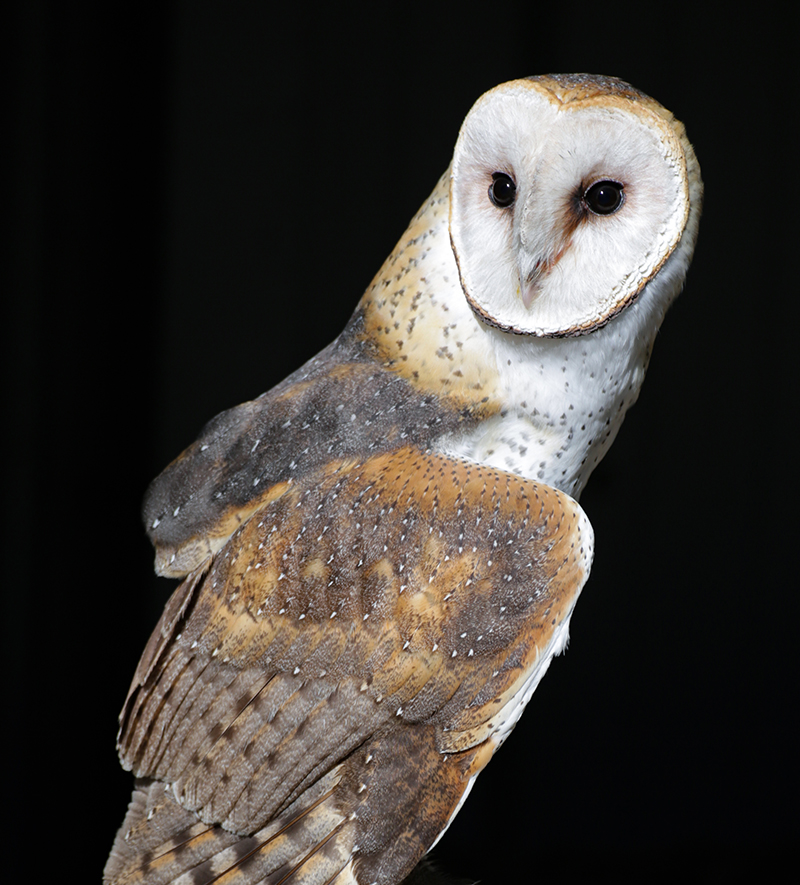
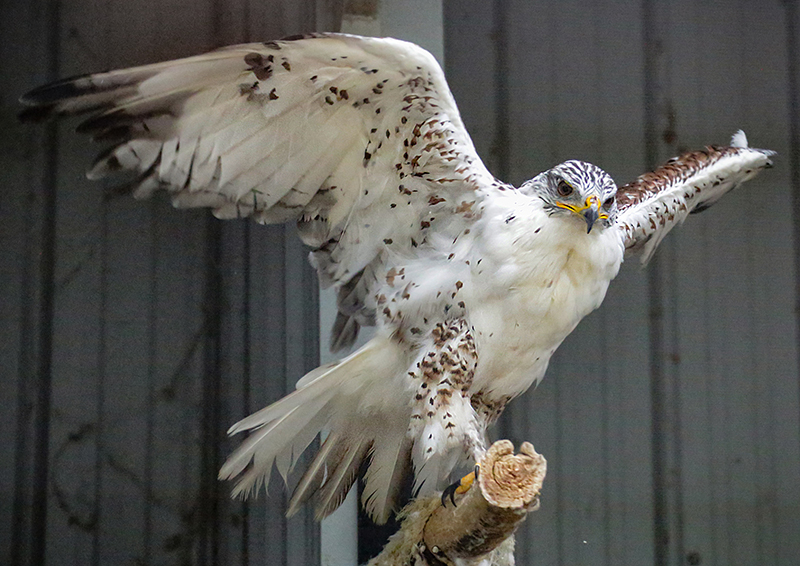
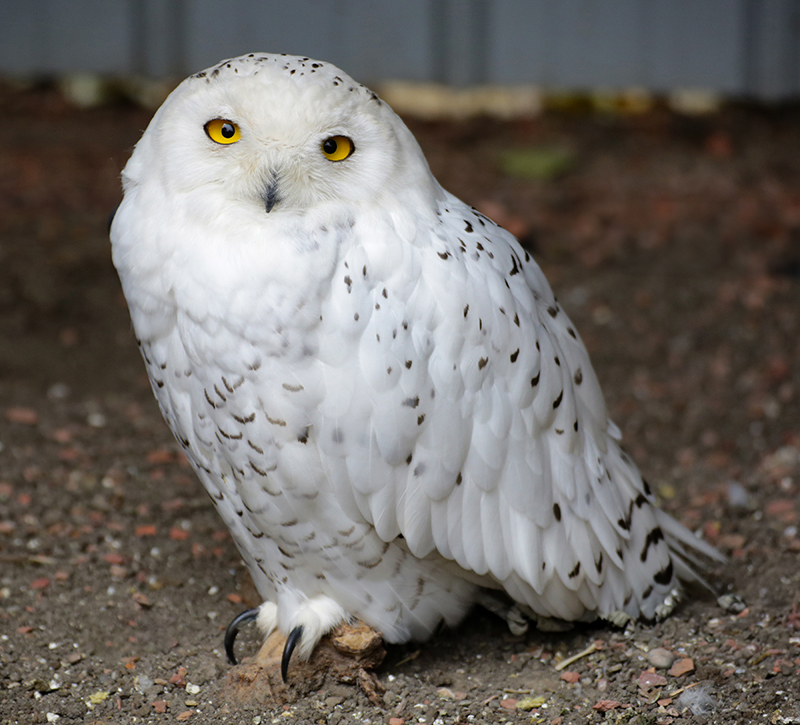
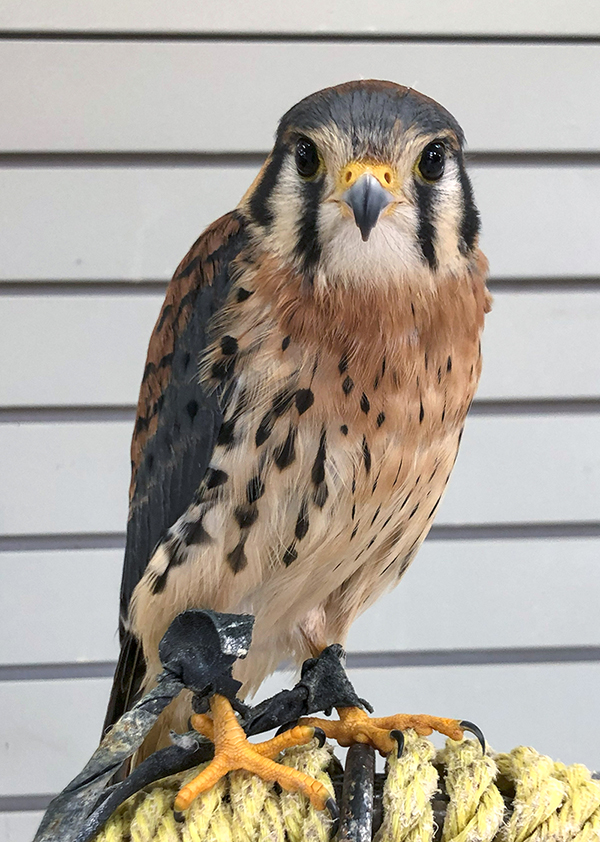
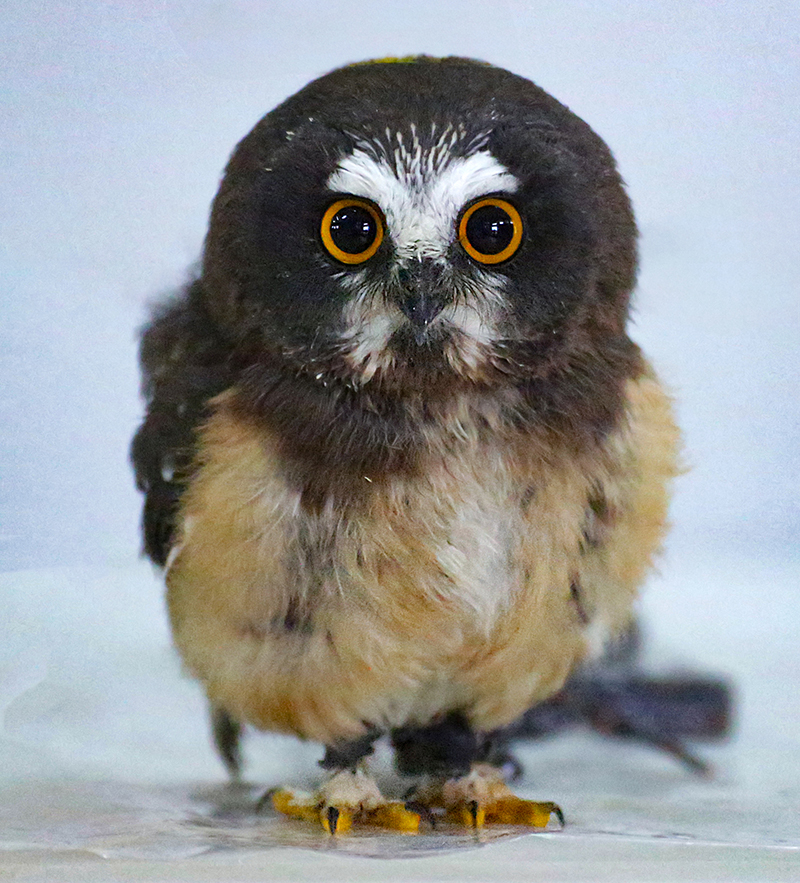
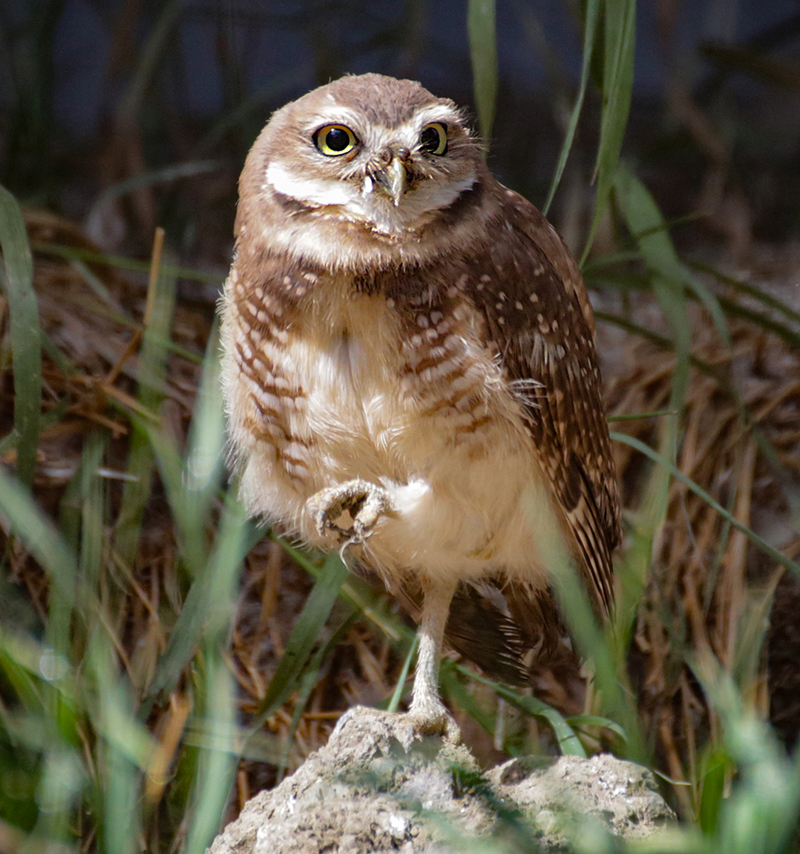
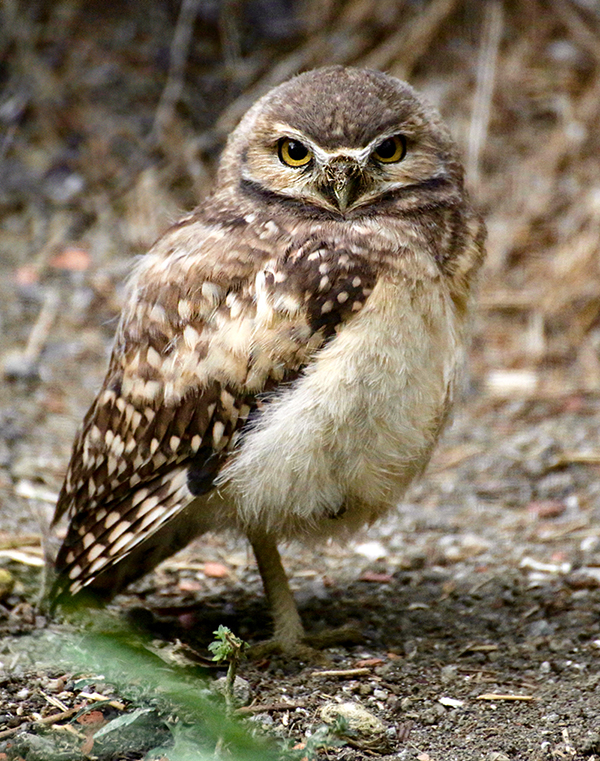
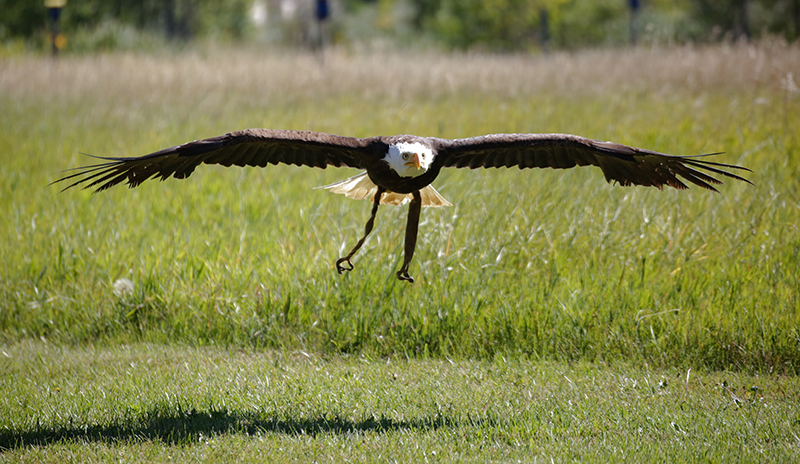
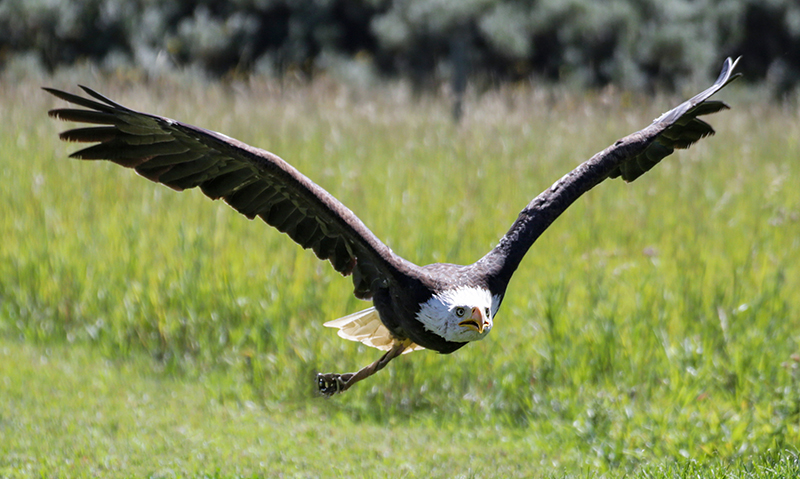
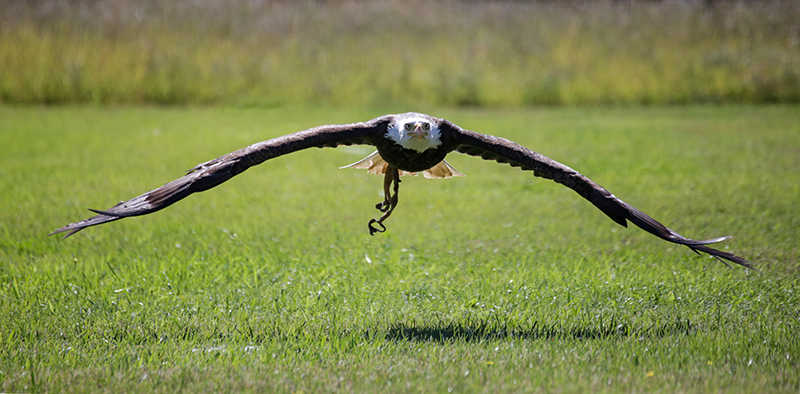
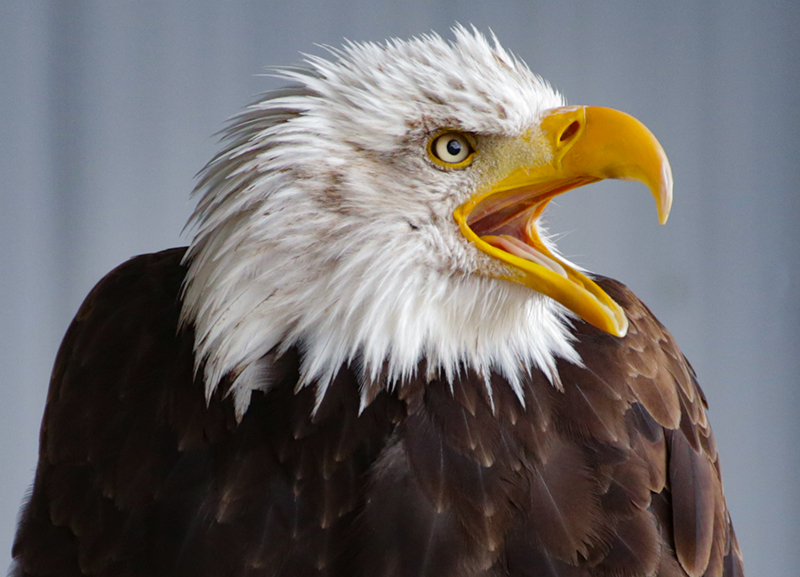
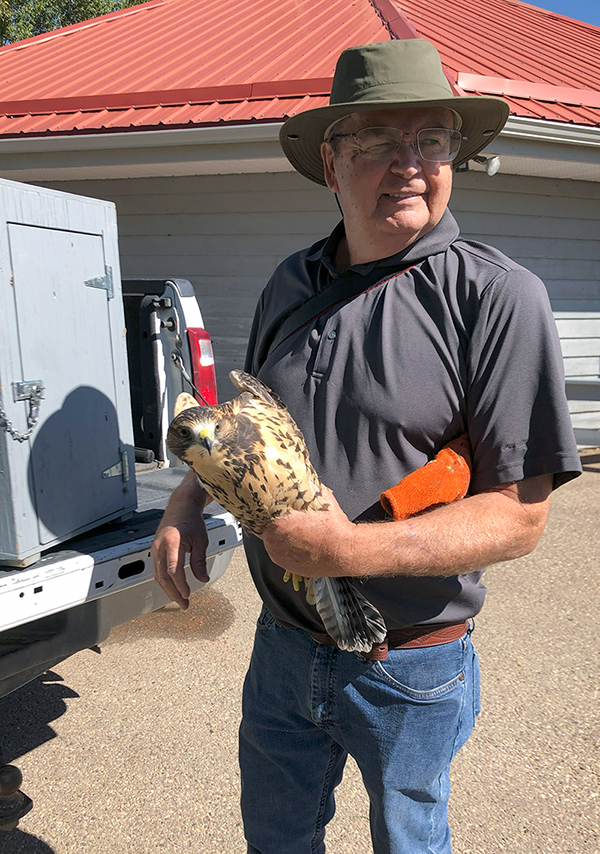
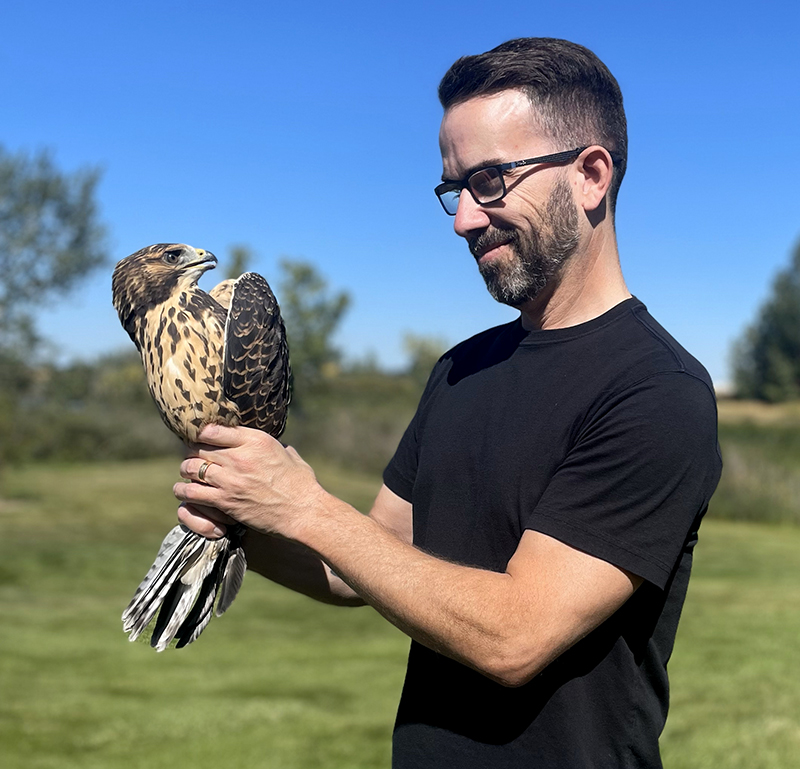
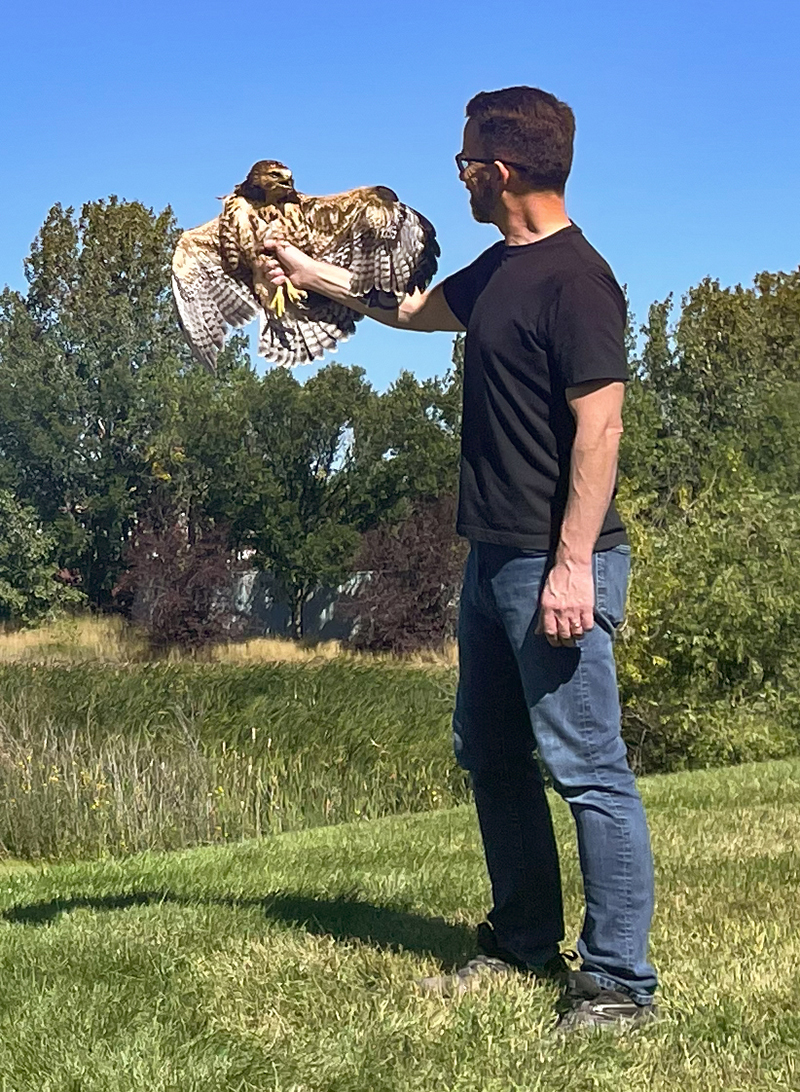
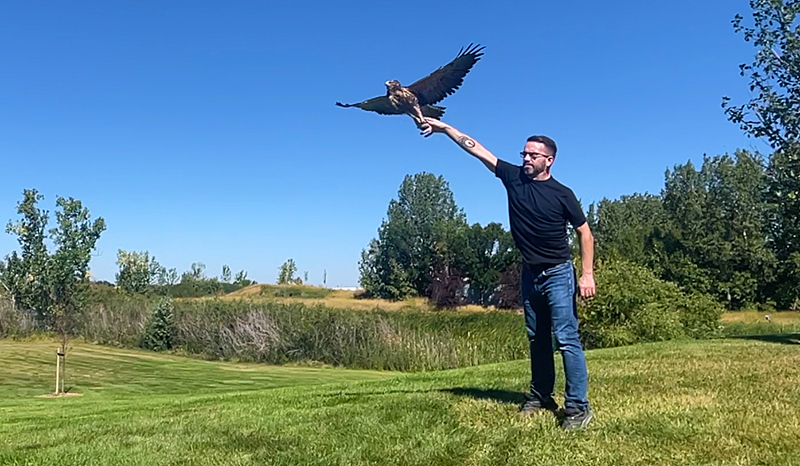

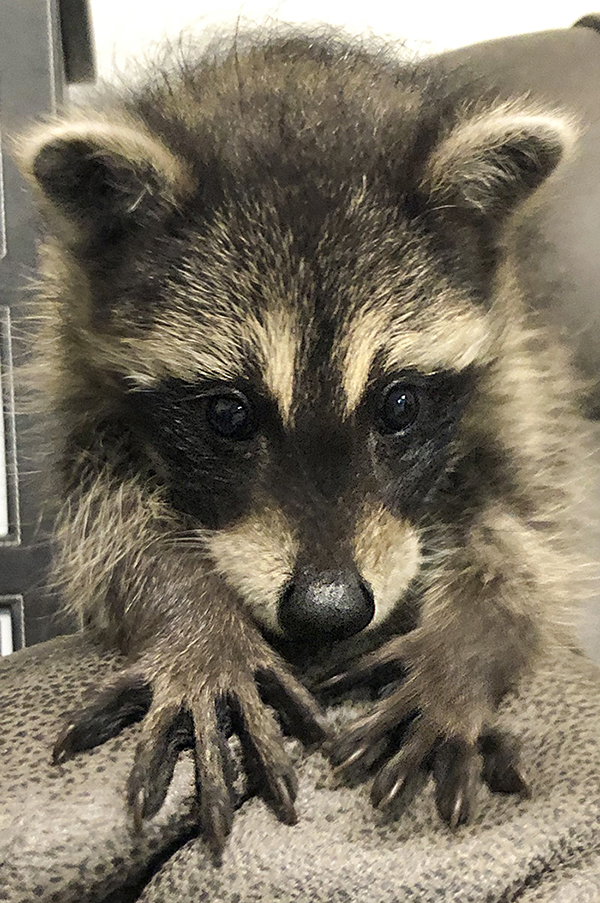 Despite the bright sun, I got some shots of the two black bear cubs. There might be inspiration for a painting or two in the few photos I kept, but I will let them simmer and review them in a few months. My mood and circumstances can colour my perception, so shots that don’t inspire me in August might push the right buttons in January.
Despite the bright sun, I got some shots of the two black bear cubs. There might be inspiration for a painting or two in the few photos I kept, but I will let them simmer and review them in a few months. My mood and circumstances can colour my perception, so shots that don’t inspire me in August might push the right buttons in January.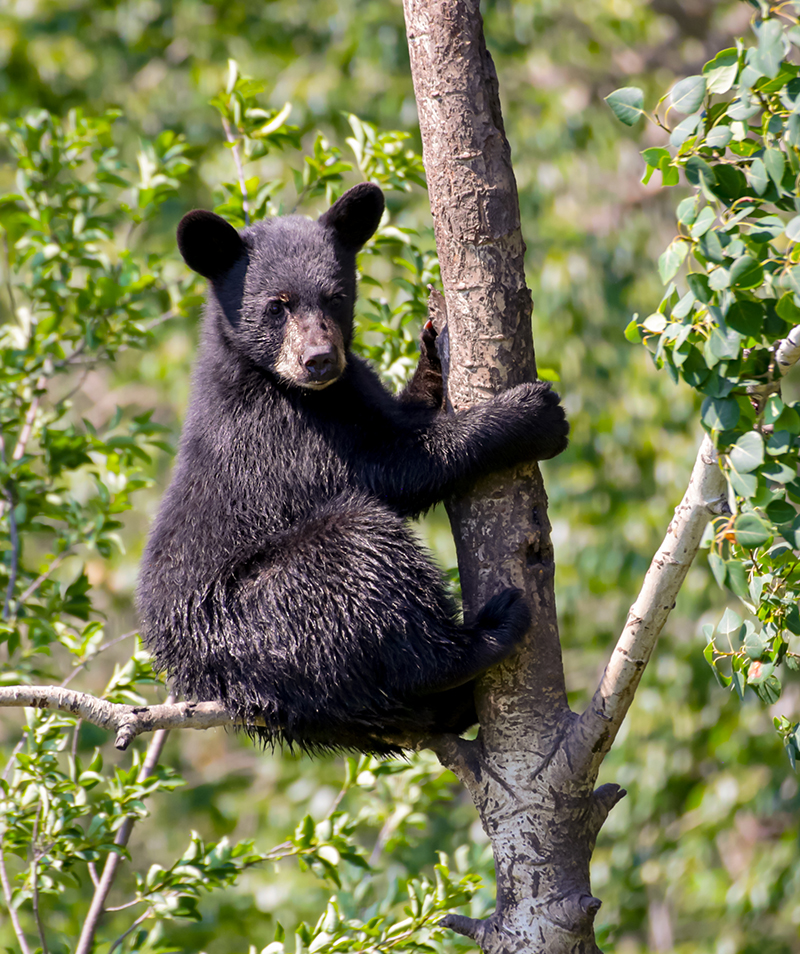 Although I prefer to take my own reference photos whenever possible, I am not interested in becoming a professional photographer. Connecting the dots between aperture, shutter speed and ISO and understanding how they work together, it just seems like math and bores the hell out of me.
Although I prefer to take my own reference photos whenever possible, I am not interested in becoming a professional photographer. Connecting the dots between aperture, shutter speed and ISO and understanding how they work together, it just seems like math and bores the hell out of me.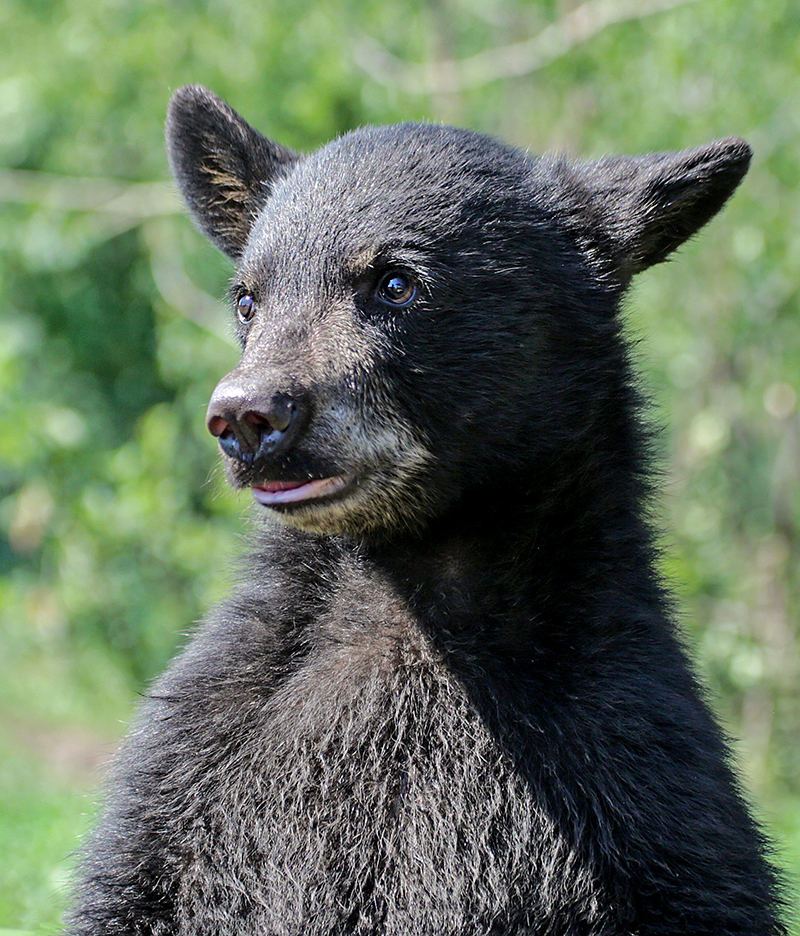 I know that hook because I have it for drawing and painting. I can spend hours detailing little hairs or working to get the texture of a bear’s nose just right. I am confident that would be incredibly dull for most people.
I know that hook because I have it for drawing and painting. I can spend hours detailing little hairs or working to get the texture of a bear’s nose just right. I am confident that would be incredibly dull for most people.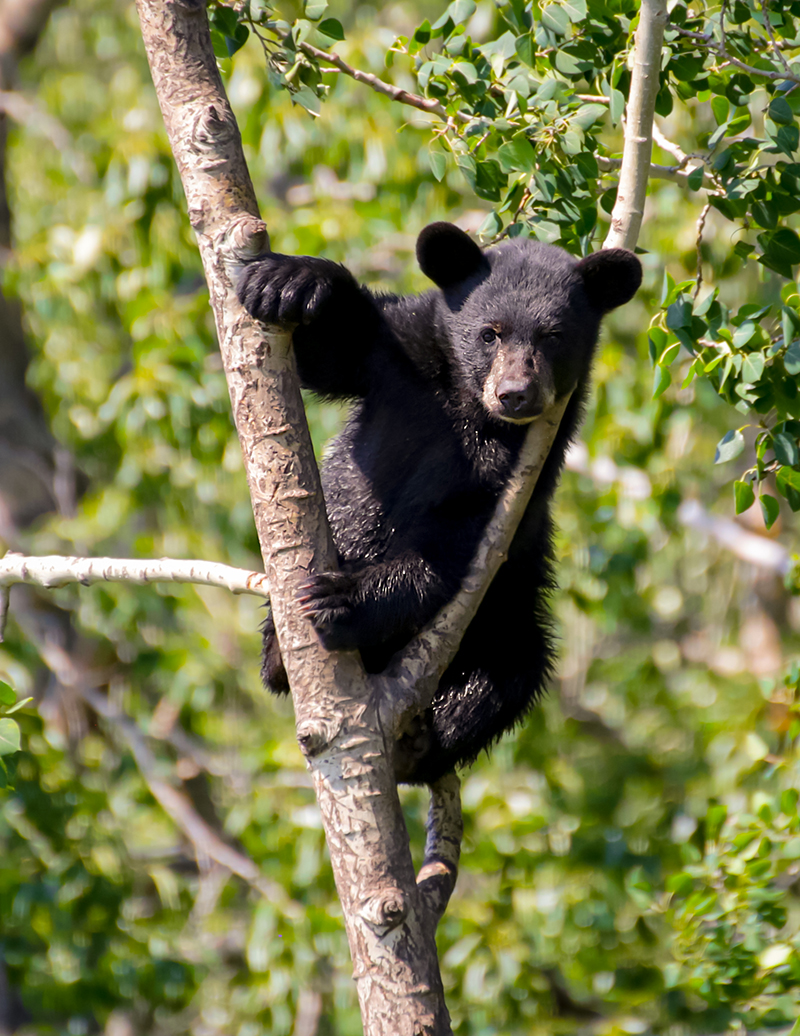 So, while I revel in learning a photography trick or technique that helps me take better reference, like
So, while I revel in learning a photography trick or technique that helps me take better reference, like 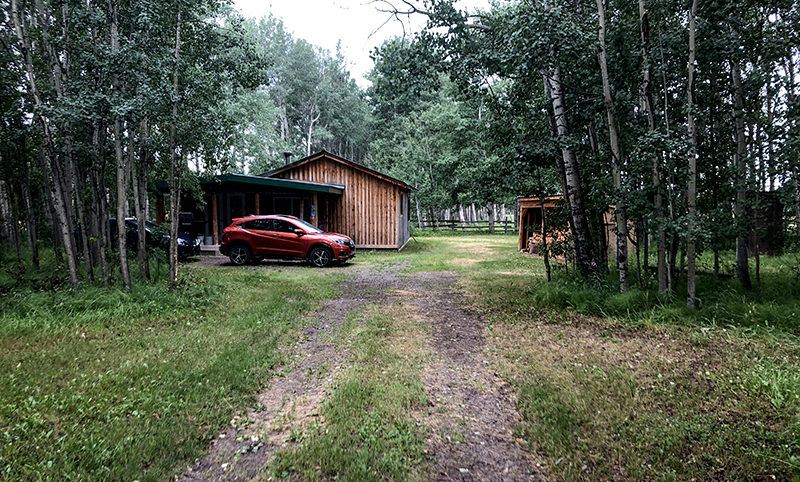 At the end of July, on the day I sent
At the end of July, on the day I sent 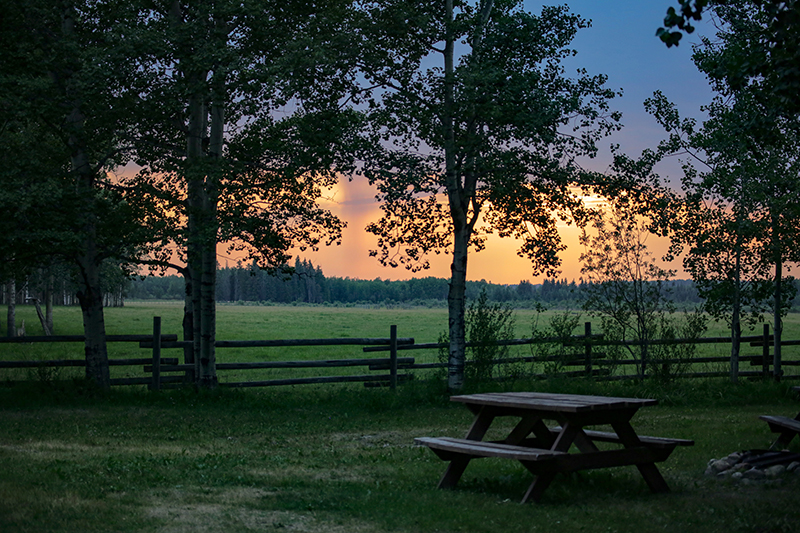 Though most of Alberta had been dealing with heavy wildfire smoke that week, it completely cleared up by the time I got to the cabin and stayed that way the whole four days we were there. The temperature even dropped to a comfortable level and we got some welcome rain. In fact, on the first night, it cooled off so much that we wondered if we might need a fire in the wood stove. Given the oppressive heat we’d just escaped, we had no appetite for that. But wearing long pants and a hoodie seemed strange that evening, given how uncomfortable the past month had been.
Though most of Alberta had been dealing with heavy wildfire smoke that week, it completely cleared up by the time I got to the cabin and stayed that way the whole four days we were there. The temperature even dropped to a comfortable level and we got some welcome rain. In fact, on the first night, it cooled off so much that we wondered if we might need a fire in the wood stove. Given the oppressive heat we’d just escaped, we had no appetite for that. But wearing long pants and a hoodie seemed strange that evening, given how uncomfortable the past month had been.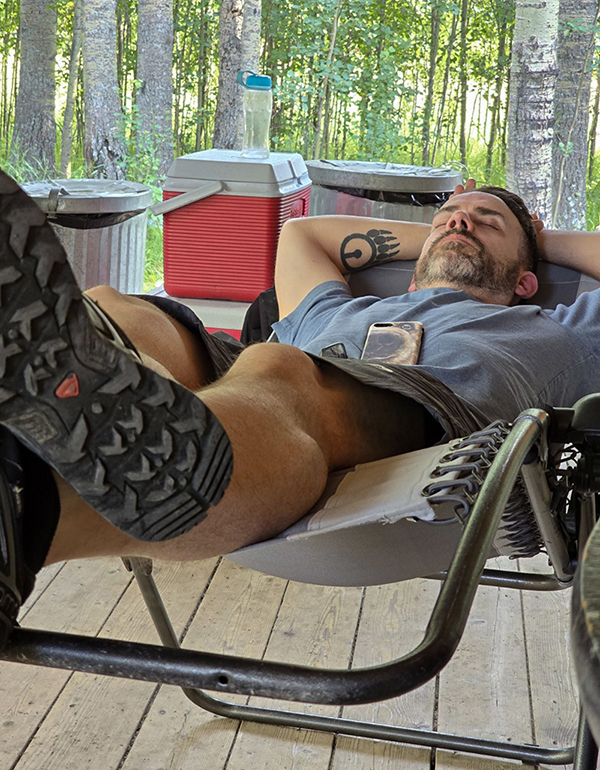 Even though I couldn’t turn off my busy brain, it was good to get away. We did what we always do: sat around talking, napped on the decks in the afternoon, walked around the large property, and played guitar, cards and Scrabble. Yes, we’re boring old men.
Even though I couldn’t turn off my busy brain, it was good to get away. We did what we always do: sat around talking, napped on the decks in the afternoon, walked around the large property, and played guitar, cards and Scrabble. Yes, we’re boring old men.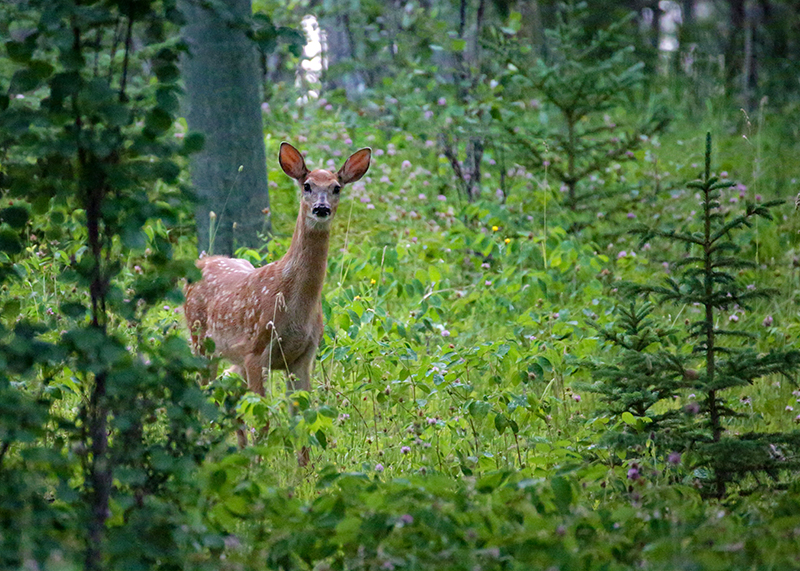 It was a very pretty and delightfully cool morning, and I knew there would be plenty of time to nap on the deck later in the day, so my mood improved. I wandered up the road, spooked a few deer and watched them take off across the neighbour’s newly cut and bailed hayfield. I kept my eyes peeled for other wildlife, hoping for an owl or coyote.
It was a very pretty and delightfully cool morning, and I knew there would be plenty of time to nap on the deck later in the day, so my mood improved. I wandered up the road, spooked a few deer and watched them take off across the neighbour’s newly cut and bailed hayfield. I kept my eyes peeled for other wildlife, hoping for an owl or coyote.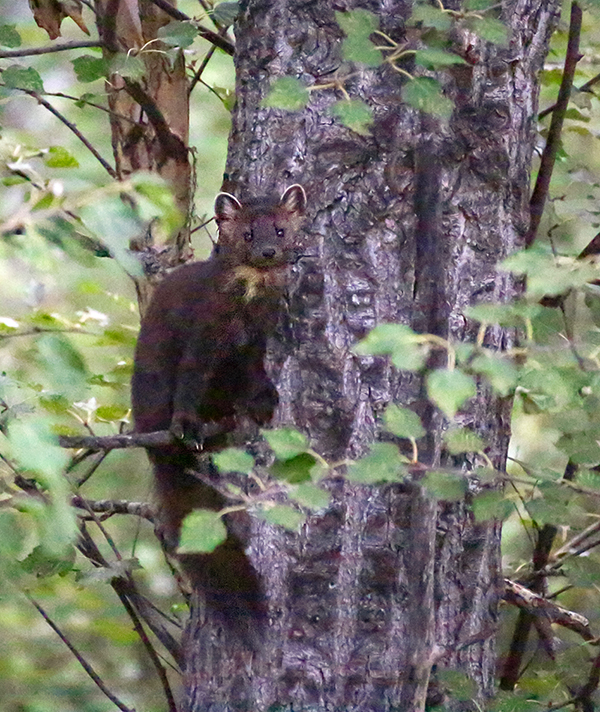 The base of the tree she ran up to escape was twenty feet below me down the steep bank, so her ‘safe height’ now put her at eye level with me as I stood on the road. And she was NOT happy about it.
The base of the tree she ran up to escape was twenty feet below me down the steep bank, so her ‘safe height’ now put her at eye level with me as I stood on the road. And she was NOT happy about it.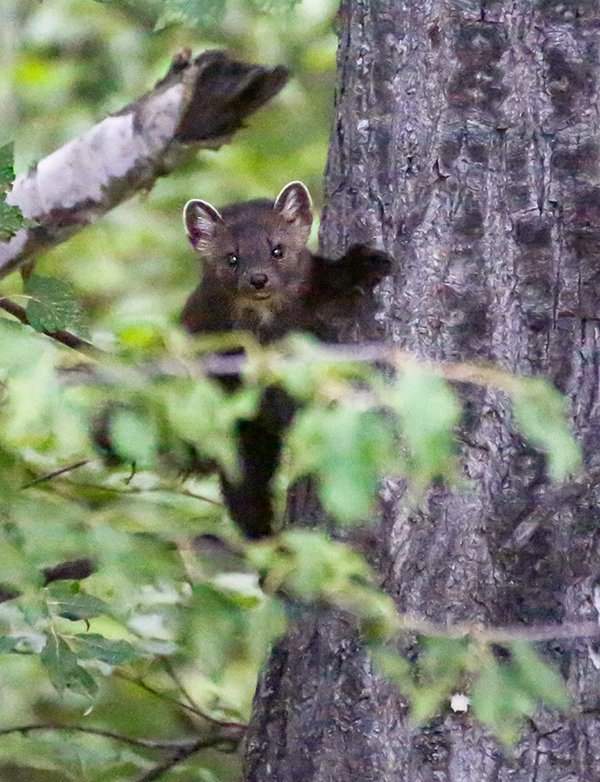 Though I had done what I could to boost my exposure compensation to account for the dark area in which I was shooting, I needed to keep the shutter speed high to try to capture this quick little marten. In the end, none of the pictures I got were very good, but I enjoyed the moment. I don’t know if I have ever seen a pine marten in the wild, but I was pleased with the early morning treat.
Though I had done what I could to boost my exposure compensation to account for the dark area in which I was shooting, I needed to keep the shutter speed high to try to capture this quick little marten. In the end, none of the pictures I got were very good, but I enjoyed the moment. I don’t know if I have ever seen a pine marten in the wild, but I was pleased with the early morning treat.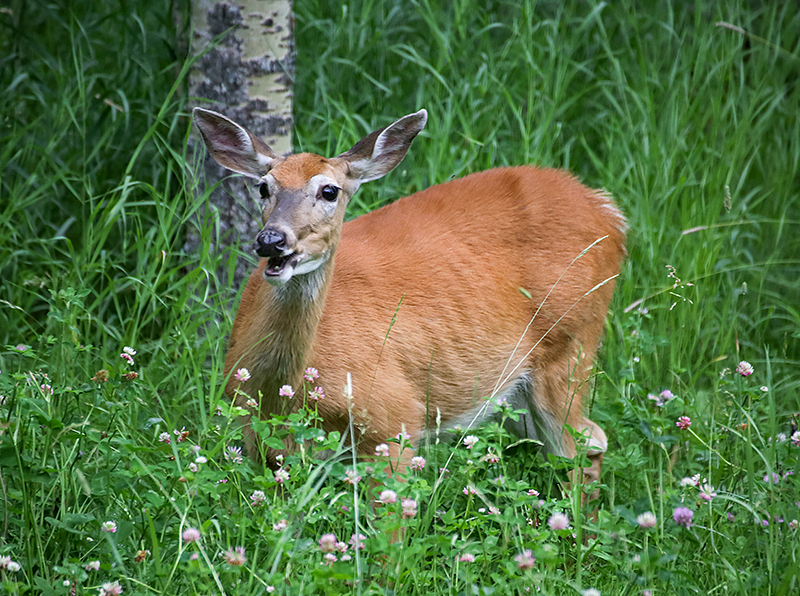 .
.
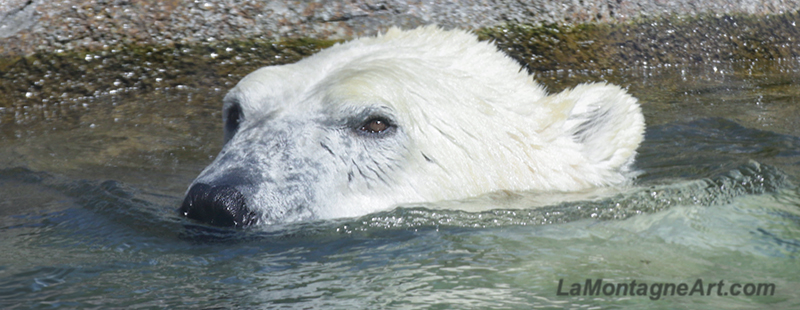 Because of my current workload and deadlines, I haven’t been able to get away for reference photos lately. Shonna and I want to see our families and visit
Because of my current workload and deadlines, I haven’t been able to get away for reference photos lately. Shonna and I want to see our families and visit 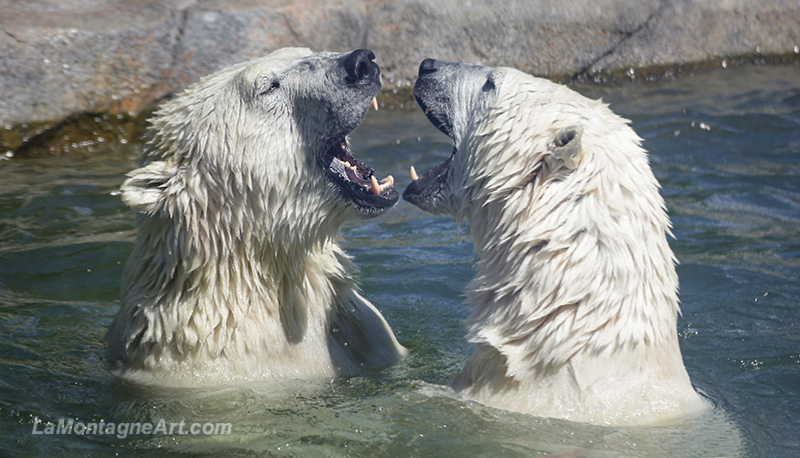 When I got to the new polar bear habitat, I was surprised to find both bears sparring with each other in their smaller splash pool. They have a much larger pool, but this was clearly where they wanted to be. Baffin and Siku seemed to be having a great time, wrestling, biting, and pushing each other under the water.
When I got to the new polar bear habitat, I was surprised to find both bears sparring with each other in their smaller splash pool. They have a much larger pool, but this was clearly where they wanted to be. Baffin and Siku seemed to be having a great time, wrestling, biting, and pushing each other under the water.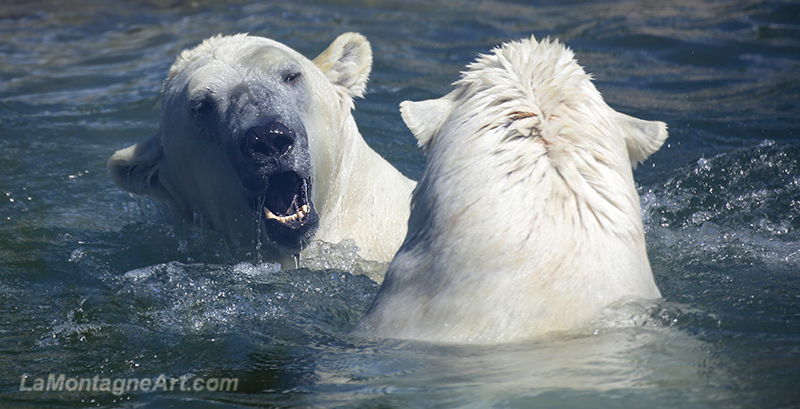 Though I have just finished a polar bear painting and haven’t time to start another one, I took plenty of references for future projects.
Though I have just finished a polar bear painting and haven’t time to start another one, I took plenty of references for future projects.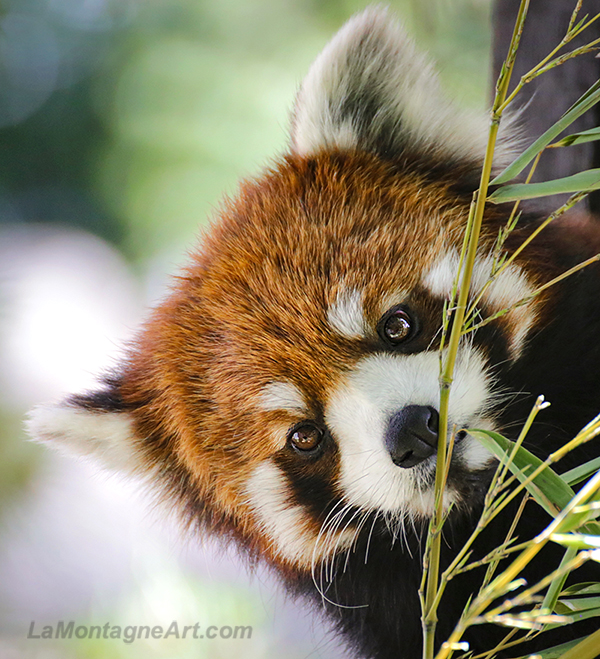 Finally, at the other end of the zoo, I caught the red pandas awake and playful and took photos that will no doubt inspire paintings down the road. One had found a perch high in a tree, balanced over a branch, in a comically lazy pose. There’s painting potential there.
Finally, at the other end of the zoo, I caught the red pandas awake and playful and took photos that will no doubt inspire paintings down the road. One had found a perch high in a tree, balanced over a branch, in a comically lazy pose. There’s painting potential there.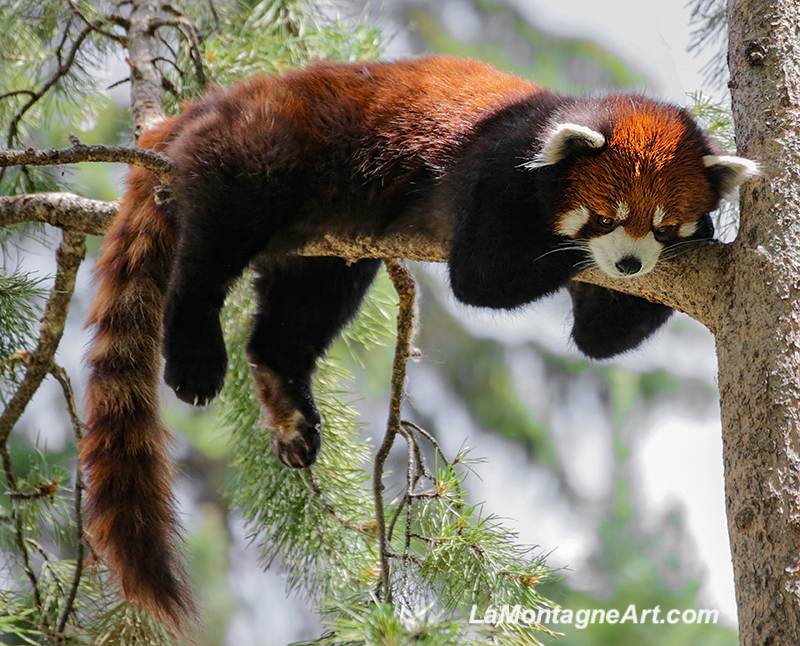 After only a couple of hours, I was more than ready to head home, sort through the pics, and finish drawing an
After only a couple of hours, I was more than ready to head home, sort through the pics, and finish drawing an 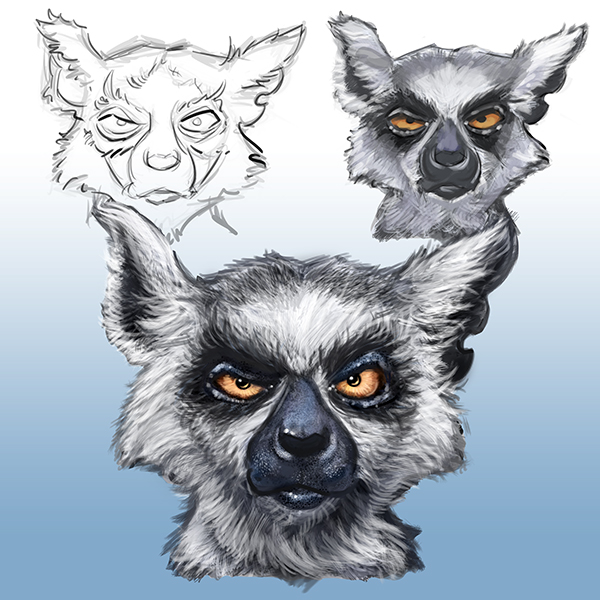
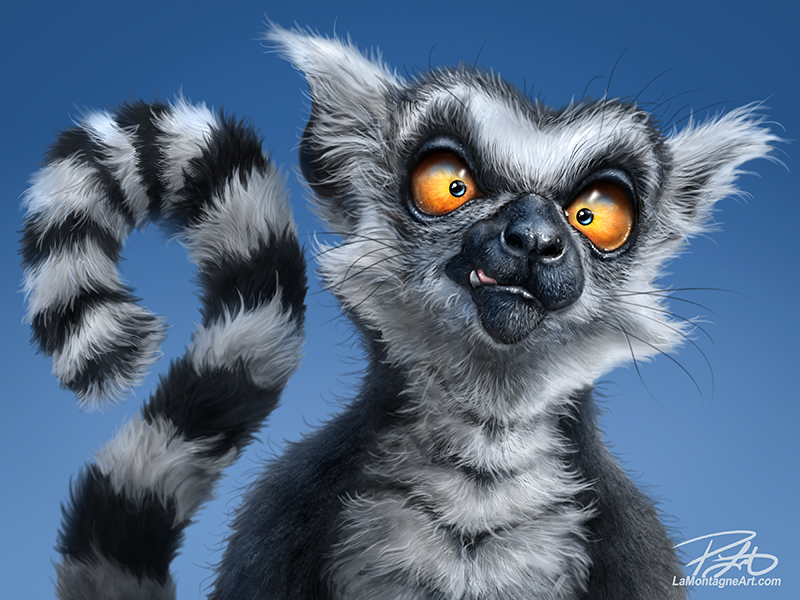
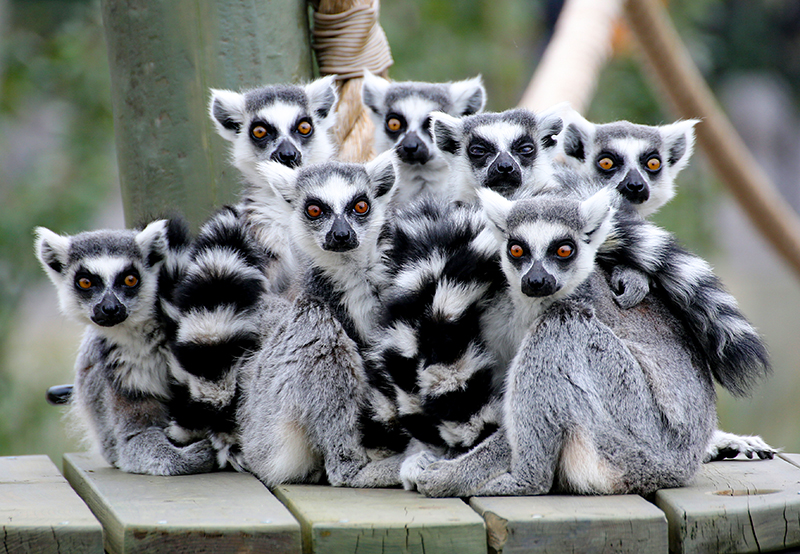 This photo always makes me chuckle. That evil-looking stare straight down my lens, the squinting focused eyes, the chunk missing from her ear. She reminds me of a gangster saying, “Come closer. See what happens.”
This photo always makes me chuckle. That evil-looking stare straight down my lens, the squinting focused eyes, the chunk missing from her ear. She reminds me of a gangster saying, “Come closer. See what happens.”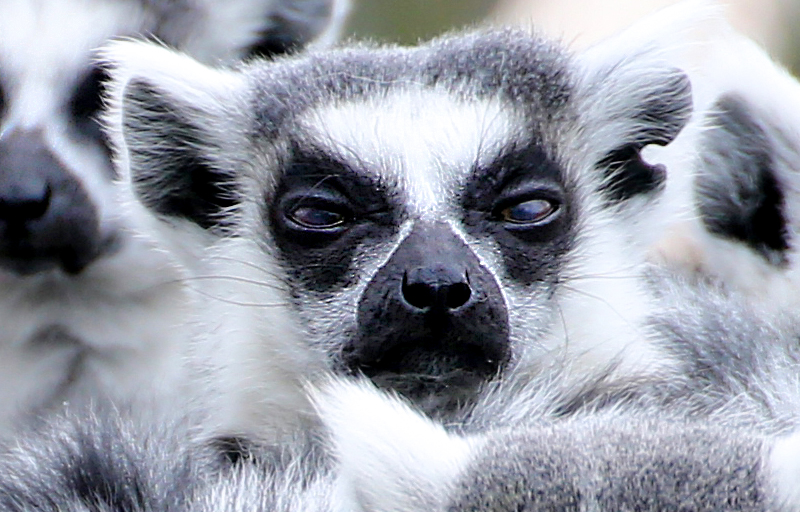
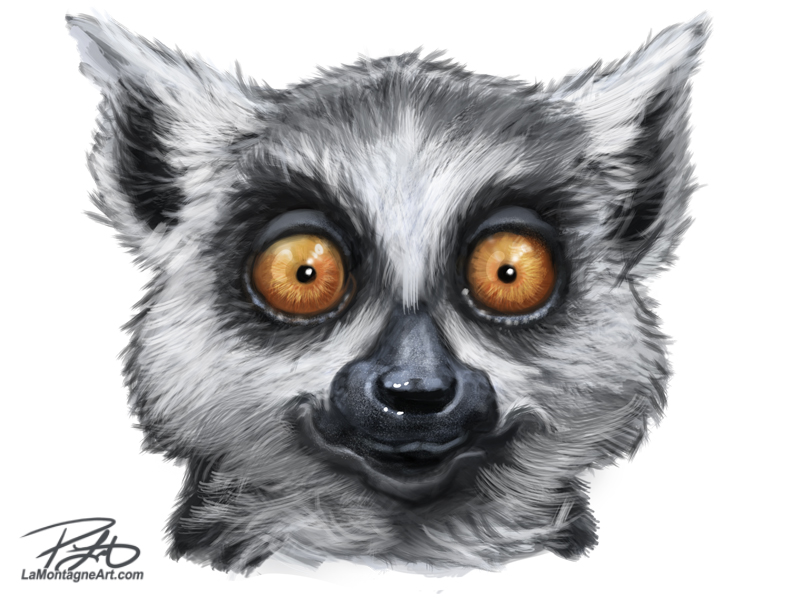 I’m happy with how it’s turned out so far, and I’m also hoping to offer the finished piece as a puzzle later this year.
I’m happy with how it’s turned out so far, and I’m also hoping to offer the finished piece as a puzzle later this year.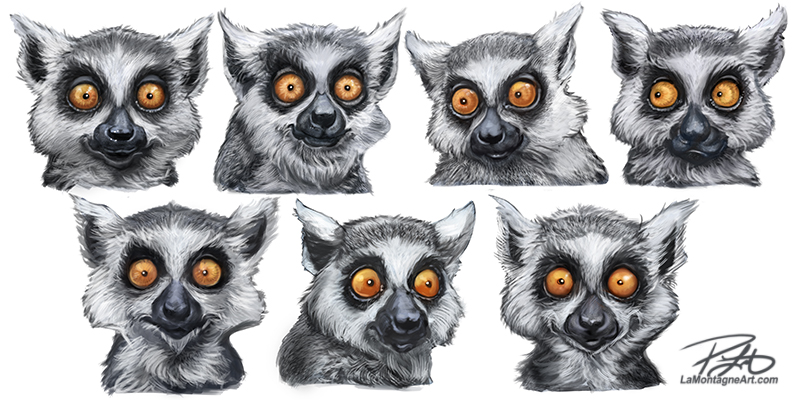 So, when I’m working on several paintings at once and more involved pieces featuring multiple animals or more detailed backgrounds, paintings that take much longer than a whimsical head and shoulders portrait can be uncomfortable. It feels like I’m not getting enough done.
So, when I’m working on several paintings at once and more involved pieces featuring multiple animals or more detailed backgrounds, paintings that take much longer than a whimsical head and shoulders portrait can be uncomfortable. It feels like I’m not getting enough done.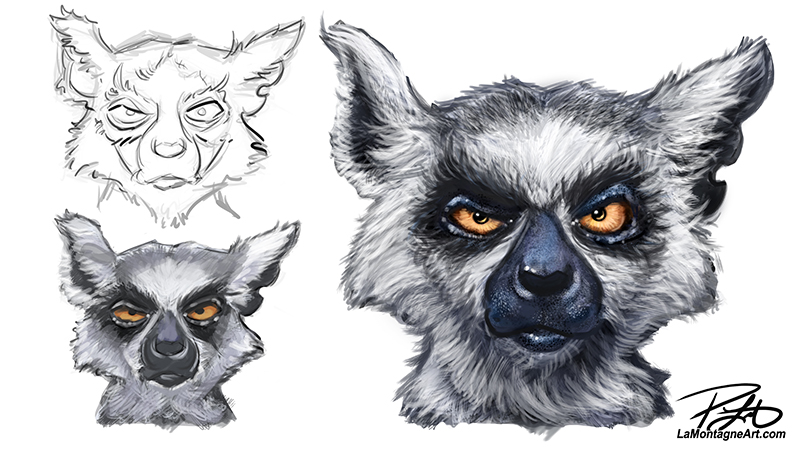 The finished piece will be a lot more detailed than the images in progress you see here. But the vision for what I’m trying to achieve is clear in my mind, and I’m having fun discovering each of these faces.
The finished piece will be a lot more detailed than the images in progress you see here. But the vision for what I’m trying to achieve is clear in my mind, and I’m having fun discovering each of these faces.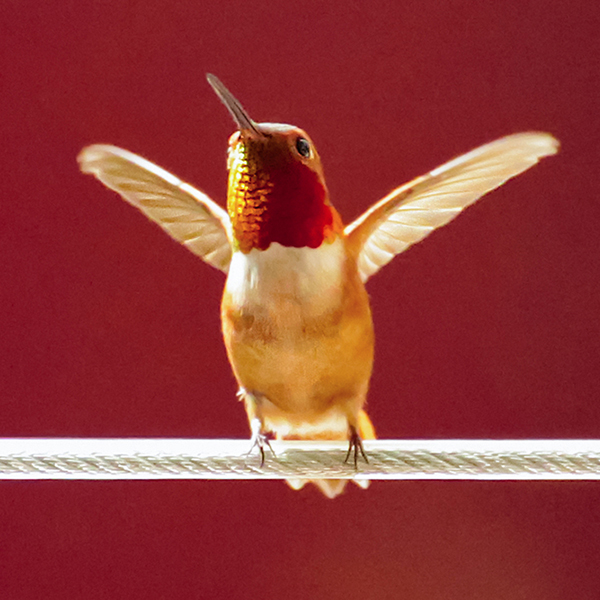
 We stayed up waiting for the northern lights Friday, but with none arriving by 11, we retreated to our separate spaces. I’m indeed one of the old guys now.
We stayed up waiting for the northern lights Friday, but with none arriving by 11, we retreated to our separate spaces. I’m indeed one of the old guys now.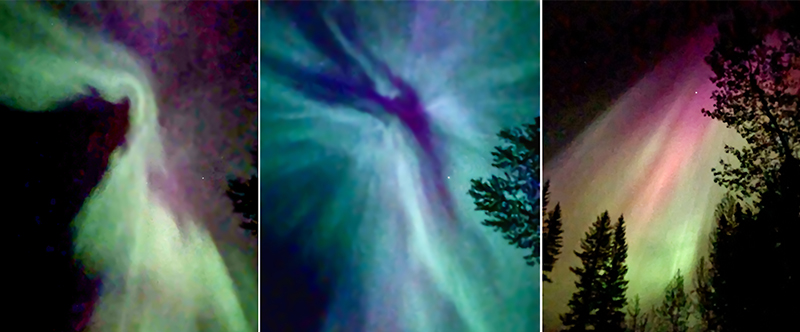 The next morning, I admitted that just before I knocked on a dark, quiet trailer, I wondered if I was painting a target on my chest. Nobody likes to be woken from a dead sleep. Thankfully, all agreed it was worth it. After all, that’s what Saturday afternoon lawn chair naps are for.
The next morning, I admitted that just before I knocked on a dark, quiet trailer, I wondered if I was painting a target on my chest. Nobody likes to be woken from a dead sleep. Thankfully, all agreed it was worth it. After all, that’s what Saturday afternoon lawn chair naps are for.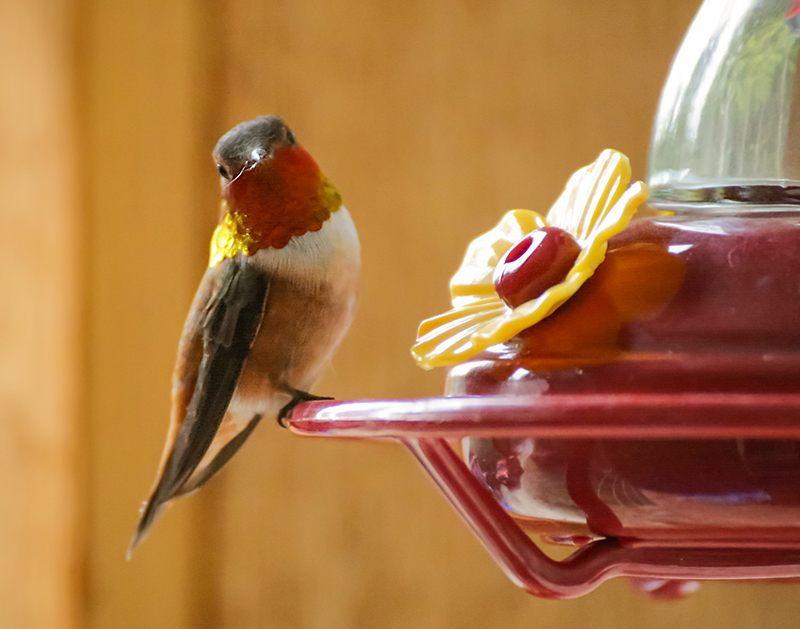 On Saturday, several hummingbirds made rounds at three or four feeders Babe and Sue have around their home. Having never before captured decent shots of these tiny speedsters, I must have learned a few things over the years as I came home with several potential reference photos, more than you see here.
On Saturday, several hummingbirds made rounds at three or four feeders Babe and Sue have around their home. Having never before captured decent shots of these tiny speedsters, I must have learned a few things over the years as I came home with several potential reference photos, more than you see here.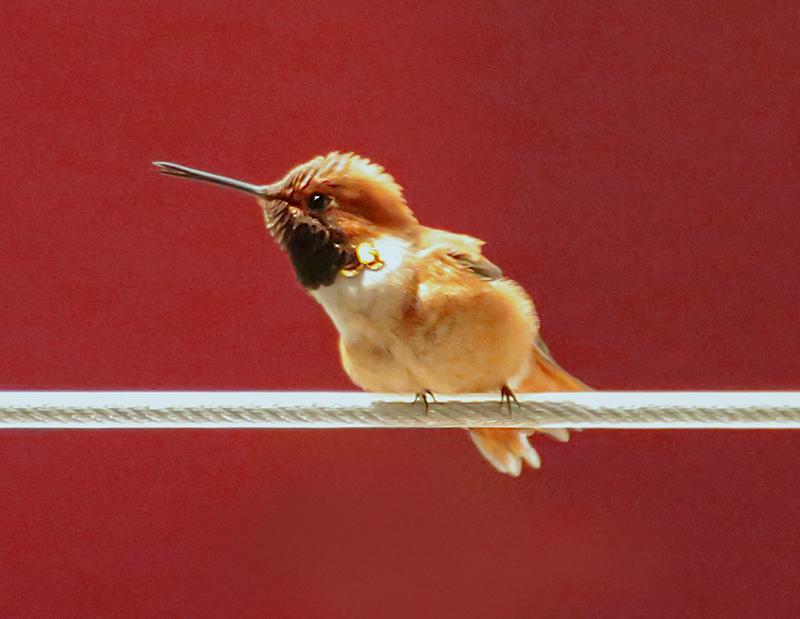 While these photos are edited, of course, that convenient red background is Babe’s little barn garage for his trailer, as a couple of the hummingbirds landed and sat on the safety wire surrounding the deck of the house.
While these photos are edited, of course, that convenient red background is Babe’s little barn garage for his trailer, as a couple of the hummingbirds landed and sat on the safety wire surrounding the deck of the house.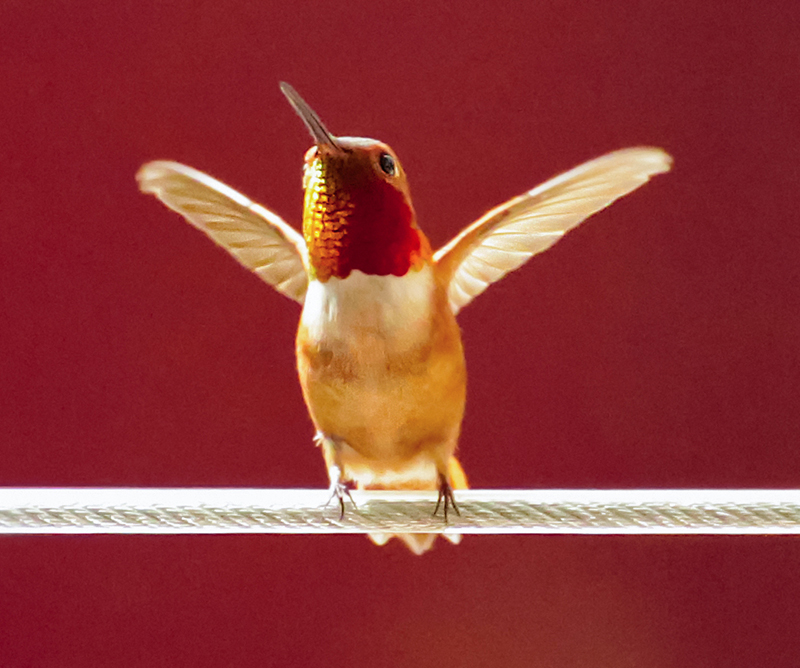 My first instinct is to paint several of these poses, a line of little hummingbirds on the same wire, and devise my own vibrant colour scheme for each bird. I’m sure that seems like sacrilege to any hardcore birders, but my art doesn’t represent reality. I guess I’ll see what happens when I get into it, whenever that might be.
My first instinct is to paint several of these poses, a line of little hummingbirds on the same wire, and devise my own vibrant colour scheme for each bird. I’m sure that seems like sacrilege to any hardcore birders, but my art doesn’t represent reality. I guess I’ll see what happens when I get into it, whenever that might be. Regardless of how or when I paint from these pics, I enjoyed stalking the quick little critters. The best part about taking wildlife photos strictly for reference is that it doesn’t matter if the backgrounds or lighting aren’t great. Where a wildlife photographer might not see an image worthy of sharing or printing, all I care about is the detail and whether it inspires a possible painting or two.
Regardless of how or when I paint from these pics, I enjoyed stalking the quick little critters. The best part about taking wildlife photos strictly for reference is that it doesn’t matter if the backgrounds or lighting aren’t great. Where a wildlife photographer might not see an image worthy of sharing or printing, all I care about is the detail and whether it inspires a possible painting or two.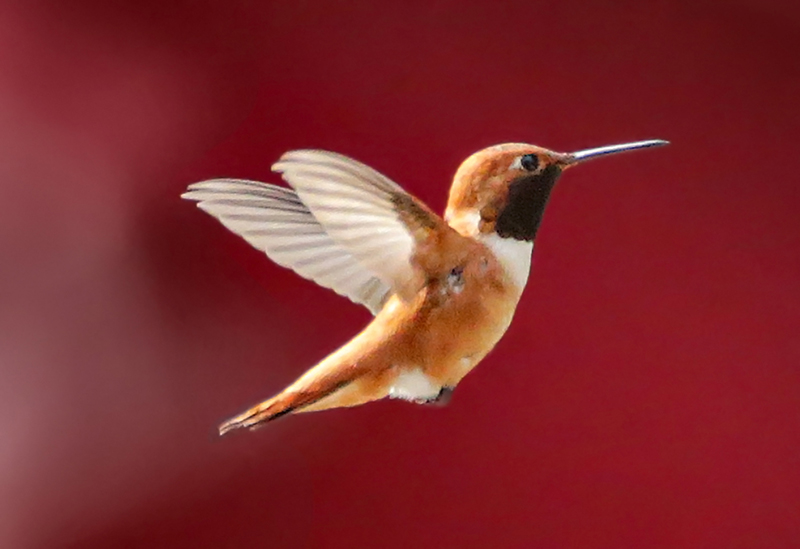 And that’s my cue to head back to the drawing board. Next time, I’ll have some new artwork to share, or at least some works in progress.
And that’s my cue to head back to the drawing board. Next time, I’ll have some new artwork to share, or at least some works in progress.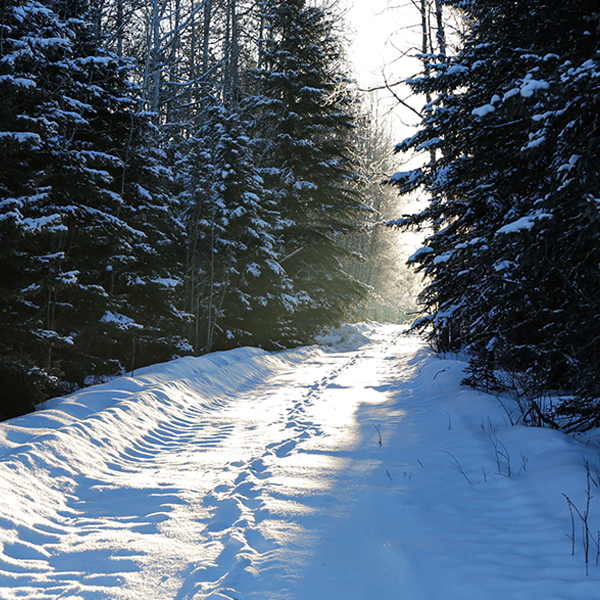
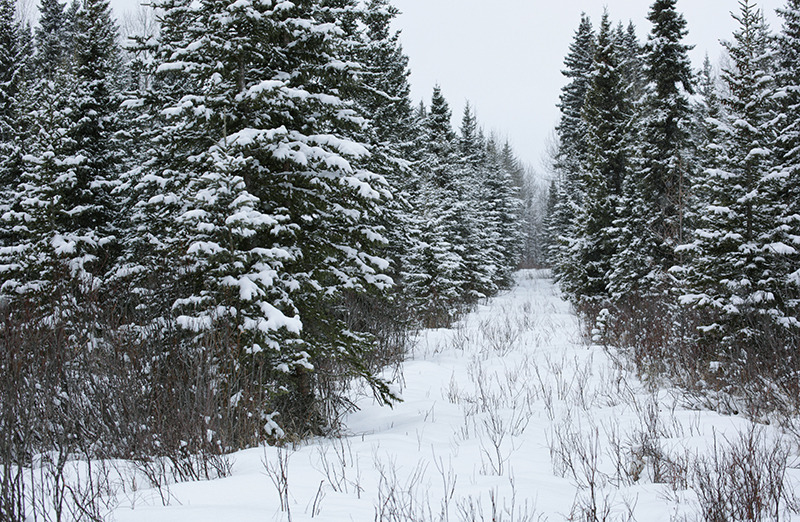 Most years, I’d rather let my birthday go unnoticed, and thankfully, I married someone who feels the same way about hers. If someone mentioned having a birthday ‘party’ for me, my first thought would be, “What the hell did I ever do to you?”
Most years, I’d rather let my birthday go unnoticed, and thankfully, I married someone who feels the same way about hers. If someone mentioned having a birthday ‘party’ for me, my first thought would be, “What the hell did I ever do to you?” But on the northern border of that same property, nestled beside secluded wetlands, there is another cabin. It’s one room, one bed, solar power for lights, an outhouse, no water and no noise. It’s at the end of a road, behind a gate on private property.
But on the northern border of that same property, nestled beside secluded wetlands, there is another cabin. It’s one room, one bed, solar power for lights, an outhouse, no water and no noise. It’s at the end of a road, behind a gate on private property.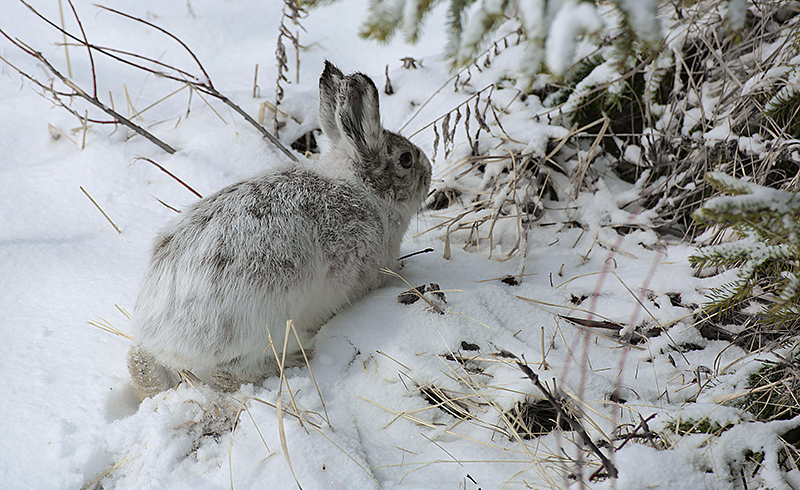 While shovelling snow, I scared a snowshoe hare out from under the deck, and I took that as a good sign. I wanted to see wildlife, even though this critter did not want to see me.
While shovelling snow, I scared a snowshoe hare out from under the deck, and I took that as a good sign. I wanted to see wildlife, even though this critter did not want to see me. The property owners have become friends over the years, and I like to visit them. While on my daily wanders, I walked up to their place a couple of times, a 5-6 km round trip from where I was staying, as I had no interest in taking the shortest route.
The property owners have become friends over the years, and I like to visit them. While on my daily wanders, I walked up to their place a couple of times, a 5-6 km round trip from where I was staying, as I had no interest in taking the shortest route.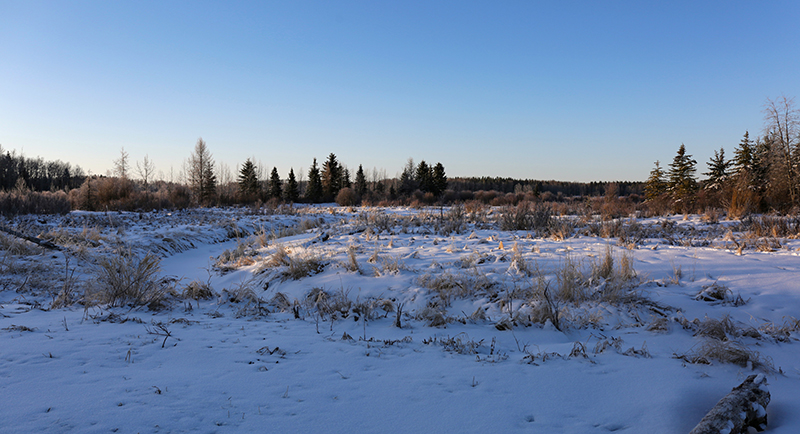 Free to roam more than 300 acres of pasture, wetlands, and forest, I walked close to 20km over 72 hours in snow and sunshine. It was peaceful and very pretty.
Free to roam more than 300 acres of pasture, wetlands, and forest, I walked close to 20km over 72 hours in snow and sunshine. It was peaceful and very pretty.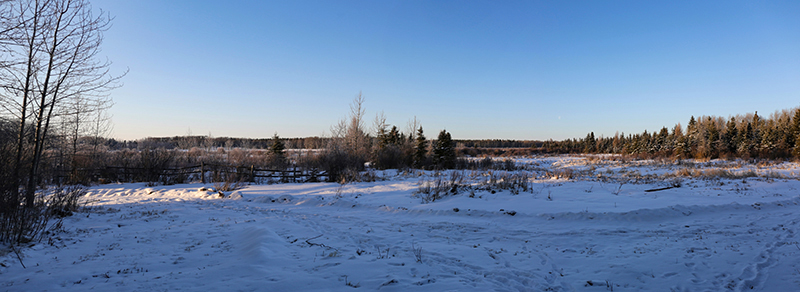 In the new fallen snow, fresh moose, coyote, deer and rabbit tracks were all over the place, many of them just hours old. I heard the coyotes at night and in the morning, and that was nice. It’s one of my favourite sounds. I listened to an owl calling two nights in a row. But all I saw were little birds flying here and there, a few ravens, a couple of geese, and that scared little bunny when I first arrived.
In the new fallen snow, fresh moose, coyote, deer and rabbit tracks were all over the place, many of them just hours old. I heard the coyotes at night and in the morning, and that was nice. It’s one of my favourite sounds. I listened to an owl calling two nights in a row. But all I saw were little birds flying here and there, a few ravens, a couple of geese, and that scared little bunny when I first arrived.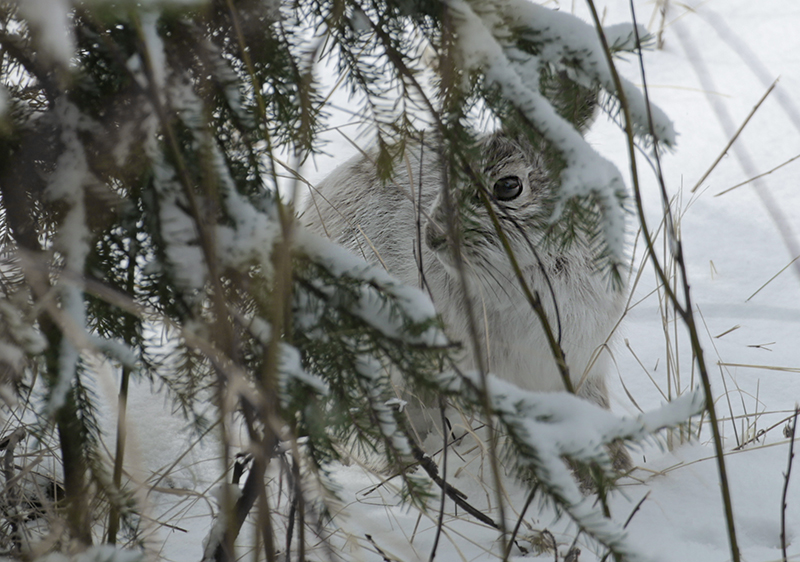 I know professional photographers who spend great amounts of time, energy and money to get to remote places, park themselves in a blind, right next to a game trail for hours and days on end, and often come home with little or nothing to show for it.
I know professional photographers who spend great amounts of time, energy and money to get to remote places, park themselves in a blind, right next to a game trail for hours and days on end, and often come home with little or nothing to show for it.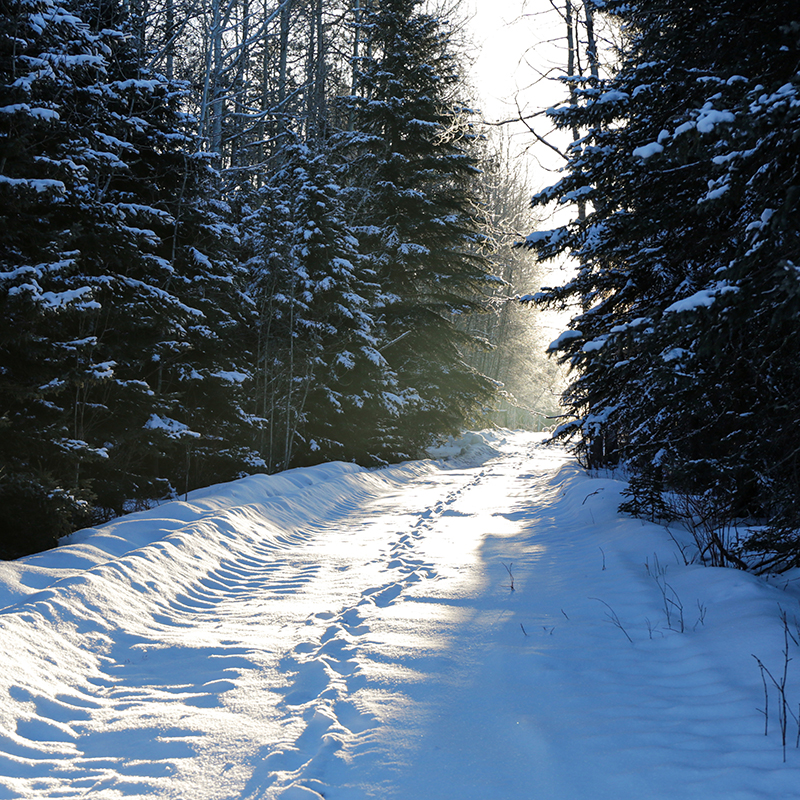 I spent my birthday by myself, without anyone telling me how I should be celebrating it. I got up early, as I prefer, without walking on eggshells for fear of waking anybody up, which is often the case on cabin visits with friends. I played guitar and sang, fumbled with chord changes, learning songs I didn’t know, without intruding on anyone else’s peace and quiet.
I spent my birthday by myself, without anyone telling me how I should be celebrating it. I got up early, as I prefer, without walking on eggshells for fear of waking anybody up, which is often the case on cabin visits with friends. I played guitar and sang, fumbled with chord changes, learning songs I didn’t know, without intruding on anyone else’s peace and quiet.
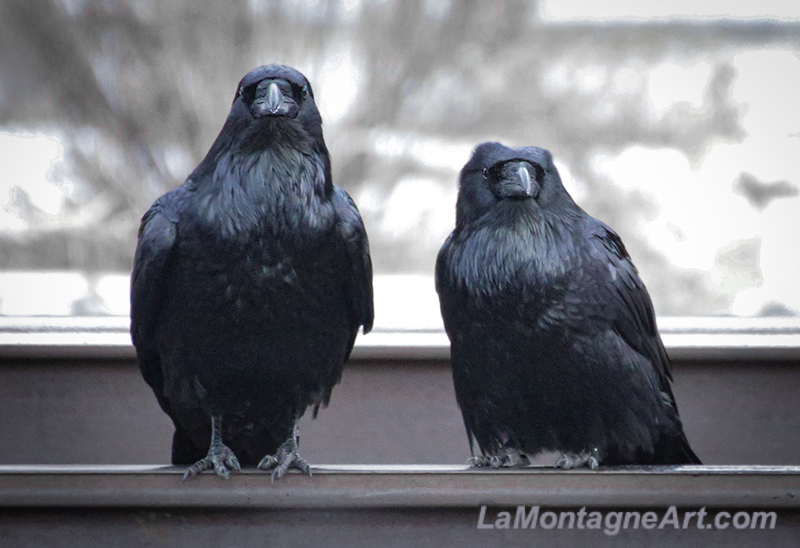 You can attribute it to seasonal affective disorder, lack of light, or the extreme cold weather that settled in this week, but January is not my favourite month. I am at my most miserable and misanthropic this time of year, coupled with a short fuse. My jaw has been bugging me for a couple of weeks, a consequence of unconscious clenching and teeth grinding. I’m not sleeping well and have bad dreams.
You can attribute it to seasonal affective disorder, lack of light, or the extreme cold weather that settled in this week, but January is not my favourite month. I am at my most miserable and misanthropic this time of year, coupled with a short fuse. My jaw has been bugging me for a couple of weeks, a consequence of unconscious clenching and teeth grinding. I’m not sleeping well and have bad dreams.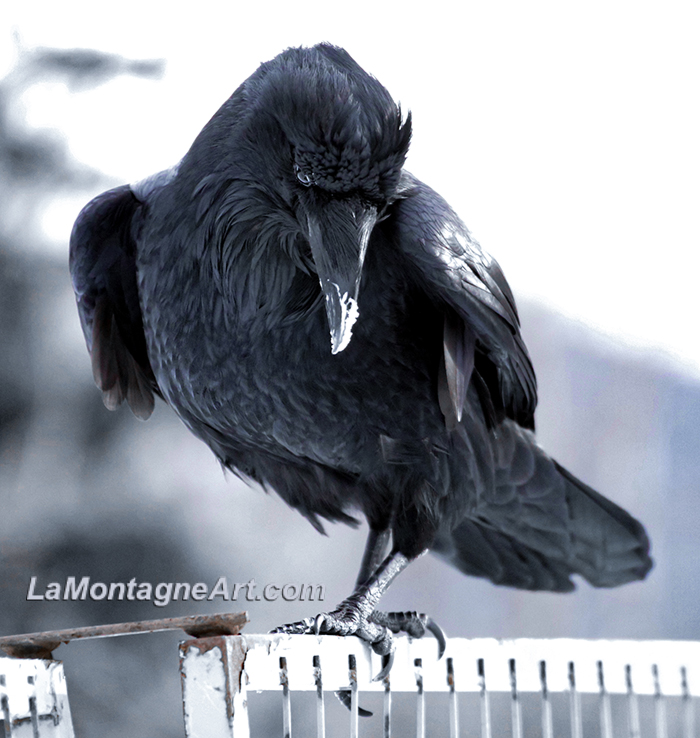 But at the moment, each
But at the moment, each 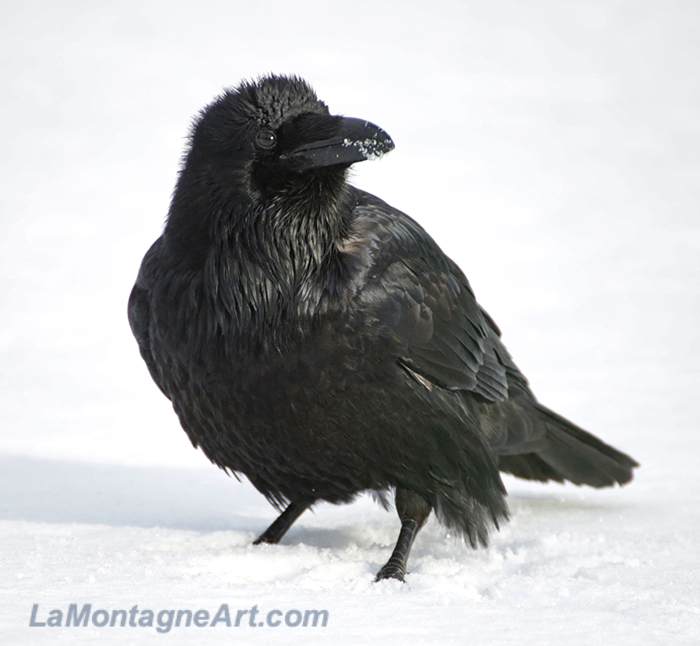 On the way, there’s a long stretch of paved pathway beside the train tracks. It runs behind another grocery store, recycling drop-off, and Canadian Tire and several ravens hang out in the area, scavenging for scraps.
On the way, there’s a long stretch of paved pathway beside the train tracks. It runs behind another grocery store, recycling drop-off, and Canadian Tire and several ravens hang out in the area, scavenging for scraps.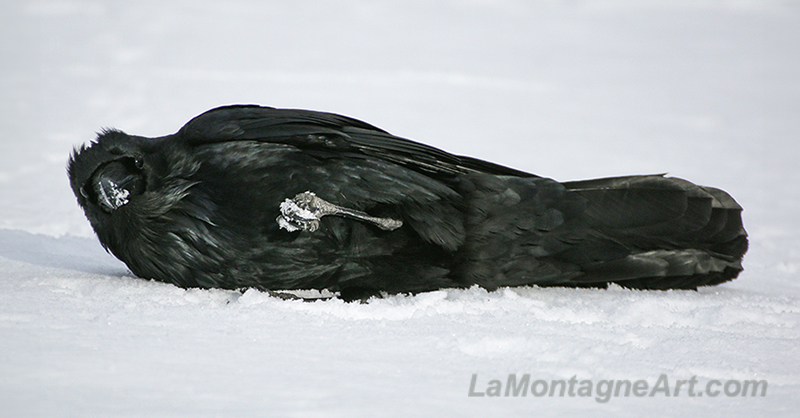 But when a raven flops down on his back and rolls around in the snow, pausing several times to look right into my lens, it’s hard not to imagine it’s doing it for my benefit. I took quite a few shots of this clown before he (or she) finally got back on his feet.
But when a raven flops down on his back and rolls around in the snow, pausing several times to look right into my lens, it’s hard not to imagine it’s doing it for my benefit. I took quite a few shots of this clown before he (or she) finally got back on his feet.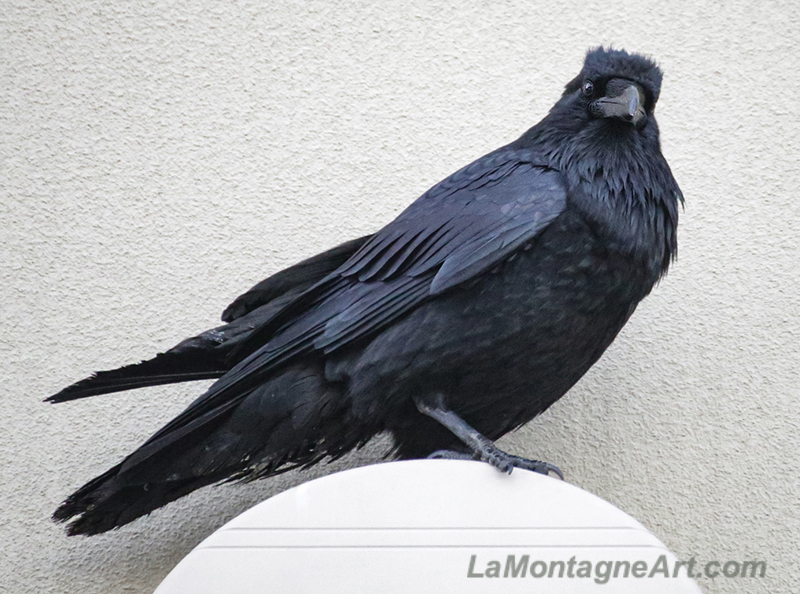 Thanks to a recent photo tip technique on my friend
Thanks to a recent photo tip technique on my friend 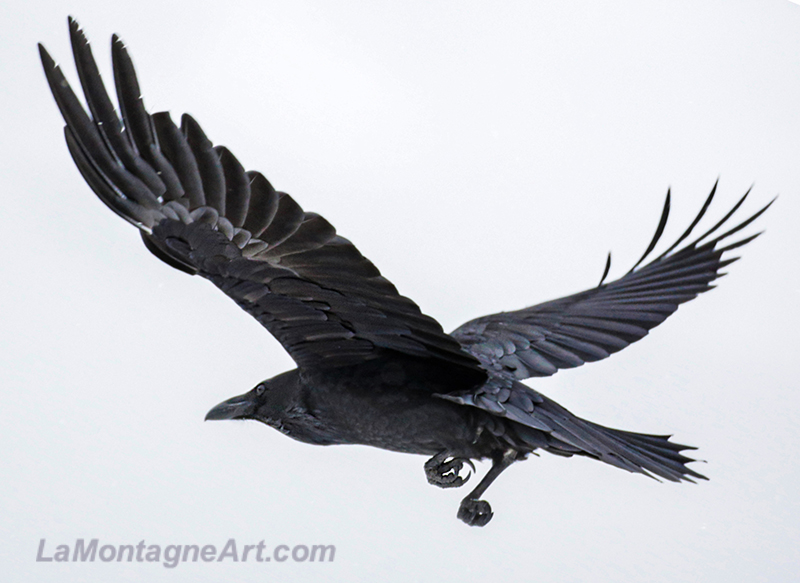 While a professional photographer might deem them unworthy for prints or portfolio pieces, I use the photos strictly for reference, so any flaws don’t matter.
While a professional photographer might deem them unworthy for prints or portfolio pieces, I use the photos strictly for reference, so any flaws don’t matter.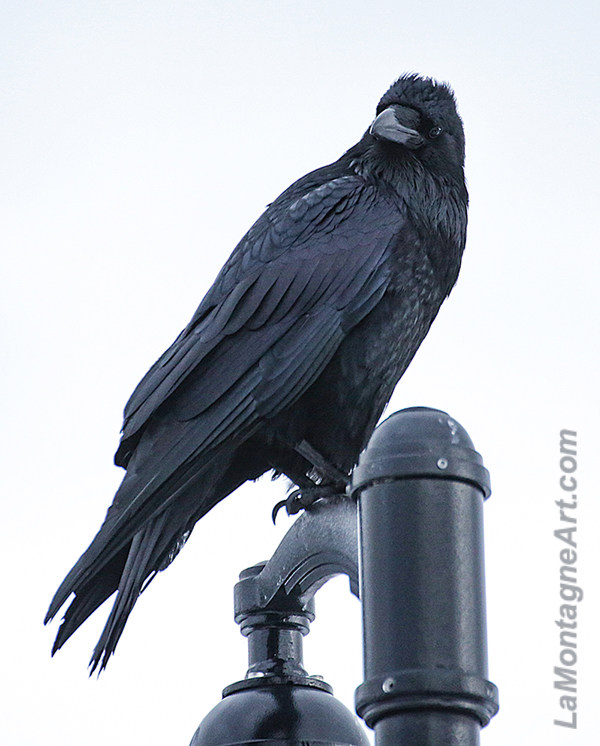 Though I’m struggling to find my creative spark right now, I know it will return as spring gets closer, and my mood will improve with more sunlight and warmer weather. It always does. And should I want to paint more ravens then, I’ll be grateful I forced myself to get out now and that I took my camera with me, even though I didn’t feel like it.
Though I’m struggling to find my creative spark right now, I know it will return as spring gets closer, and my mood will improve with more sunlight and warmer weather. It always does. And should I want to paint more ravens then, I’ll be grateful I forced myself to get out now and that I took my camera with me, even though I didn’t feel like it.

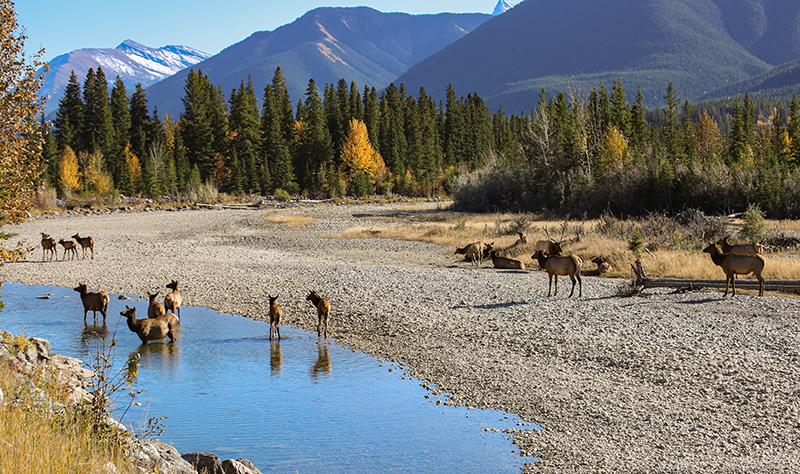 A couple of weeks ago, I biked a trail between a suburban neighbourhood and the Canmore Golf Course. It’s a popular pretty route in the trees, and I’ve taken it often. Rounding a turn, I encountered a large harem of elk lying down in the trees next to the path, with one very large bull elk standing among them.
A couple of weeks ago, I biked a trail between a suburban neighbourhood and the Canmore Golf Course. It’s a popular pretty route in the trees, and I’ve taken it often. Rounding a turn, I encountered a large harem of elk lying down in the trees next to the path, with one very large bull elk standing among them.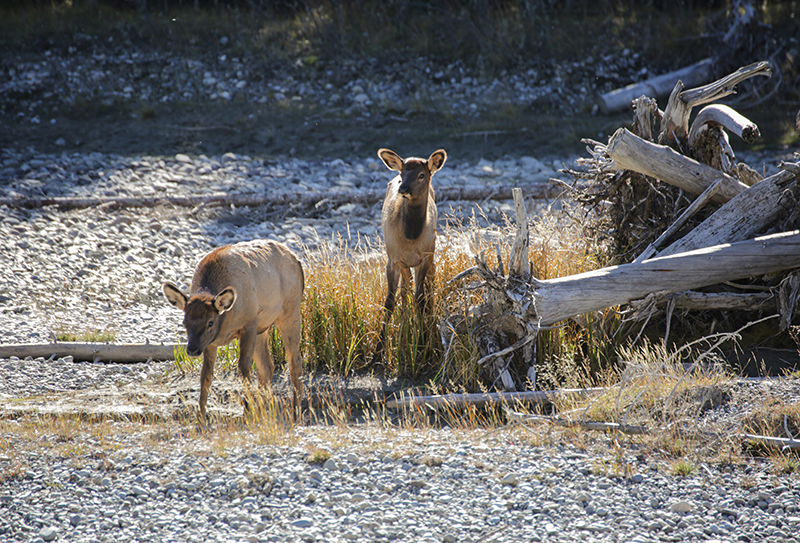 It is maddening to explain to a tourist that they are too close to an elk and, for their own safety, they should move away, only to have them dismiss you with a wave or a middle finger, saying, “Yeah, yeah, mind your own business.”
It is maddening to explain to a tourist that they are too close to an elk and, for their own safety, they should move away, only to have them dismiss you with a wave or a middle finger, saying, “Yeah, yeah, mind your own business.”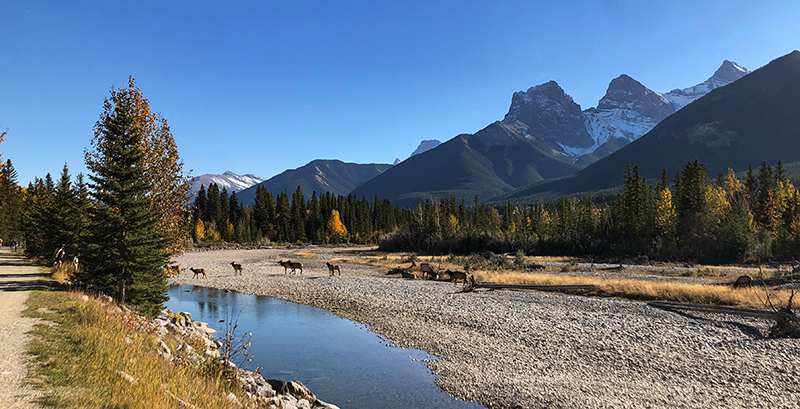 It was an ideal situation for wildlife watching because people could look as long as they wanted and take pictures, and nobody was in danger. I expected somebody might foolishly climb down the bank to get closer, but fortunately, no one did.
It was an ideal situation for wildlife watching because people could look as long as they wanted and take pictures, and nobody was in danger. I expected somebody might foolishly climb down the bank to get closer, but fortunately, no one did.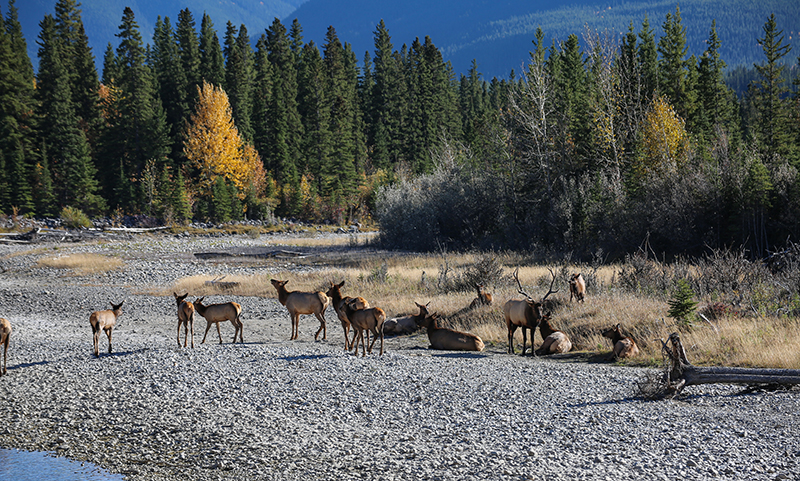 From a photography perspective, the conditions were not good. The bright afternoon sun, lower in the cloudless sky this time of year, was directly across from me. I was shooting handheld at full zoom at 300mm. I probably should have gone with a higher shutter speed, but I often get that wrong. I’m only keeping a dozen of the hundreds of photos I took. While none are suitable for photo reference, I enjoyed the experience, especially taking pics of this impressive fellow.
From a photography perspective, the conditions were not good. The bright afternoon sun, lower in the cloudless sky this time of year, was directly across from me. I was shooting handheld at full zoom at 300mm. I probably should have gone with a higher shutter speed, but I often get that wrong. I’m only keeping a dozen of the hundreds of photos I took. While none are suitable for photo reference, I enjoyed the experience, especially taking pics of this impressive fellow.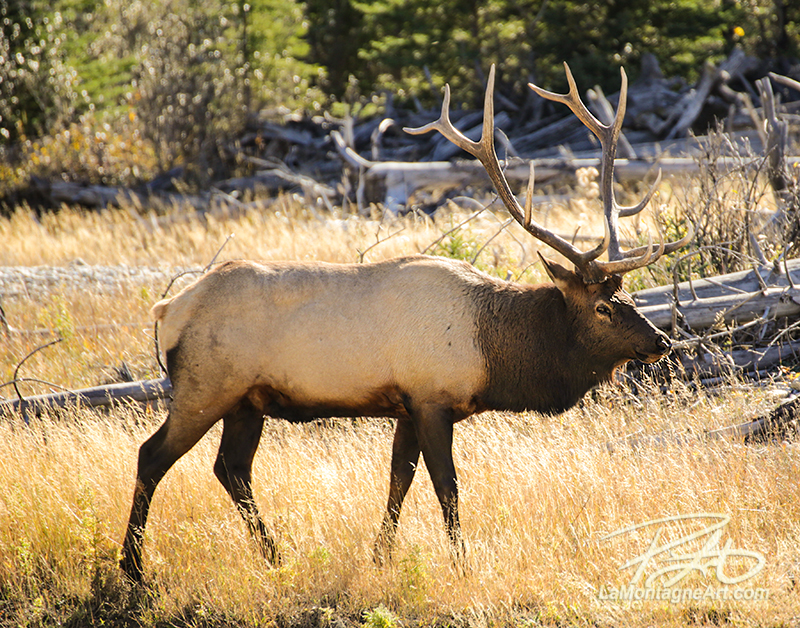 I’ve lived here for almost thirty years and still love seeing wildlife, even the common sightings of deer, elk and bighorn sheep. Parking the bike off the path for a couple of hours, snapping photos, listening to a bugling bull, and watching a herd of elk on a beautiful warm fall day in the mountains was time well spent.
I’ve lived here for almost thirty years and still love seeing wildlife, even the common sightings of deer, elk and bighorn sheep. Parking the bike off the path for a couple of hours, snapping photos, listening to a bugling bull, and watching a herd of elk on a beautiful warm fall day in the mountains was time well spent.